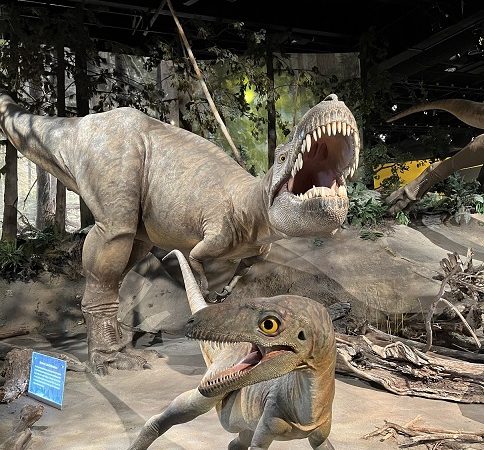Author: Larry St Aubin
I decided to make this a separate post simply because of the enormity of what the museum has to offer. It takes more that a couple of hours (which is what I had) to take it all in. I think a day would suffice. But I’m going to post some of the highlights that I found interesting.
This is for you dinosaur and science freaks. No pugs were seen in these parts.
When you walk into the first gallery, they really set the scene. It is like a movie set on Jurassic Park. The ceiling is black to dampen the refracting light. The beams are focused on the dinosaurs. You are in a prehistoric setting
Here are the Albertosaurus replicas. They were of the same species as T Rex but limited in range to the province of Alberta. In this display a mother keeps close tabs on her youngest. The teenagers in the back are romping ahead on their own.

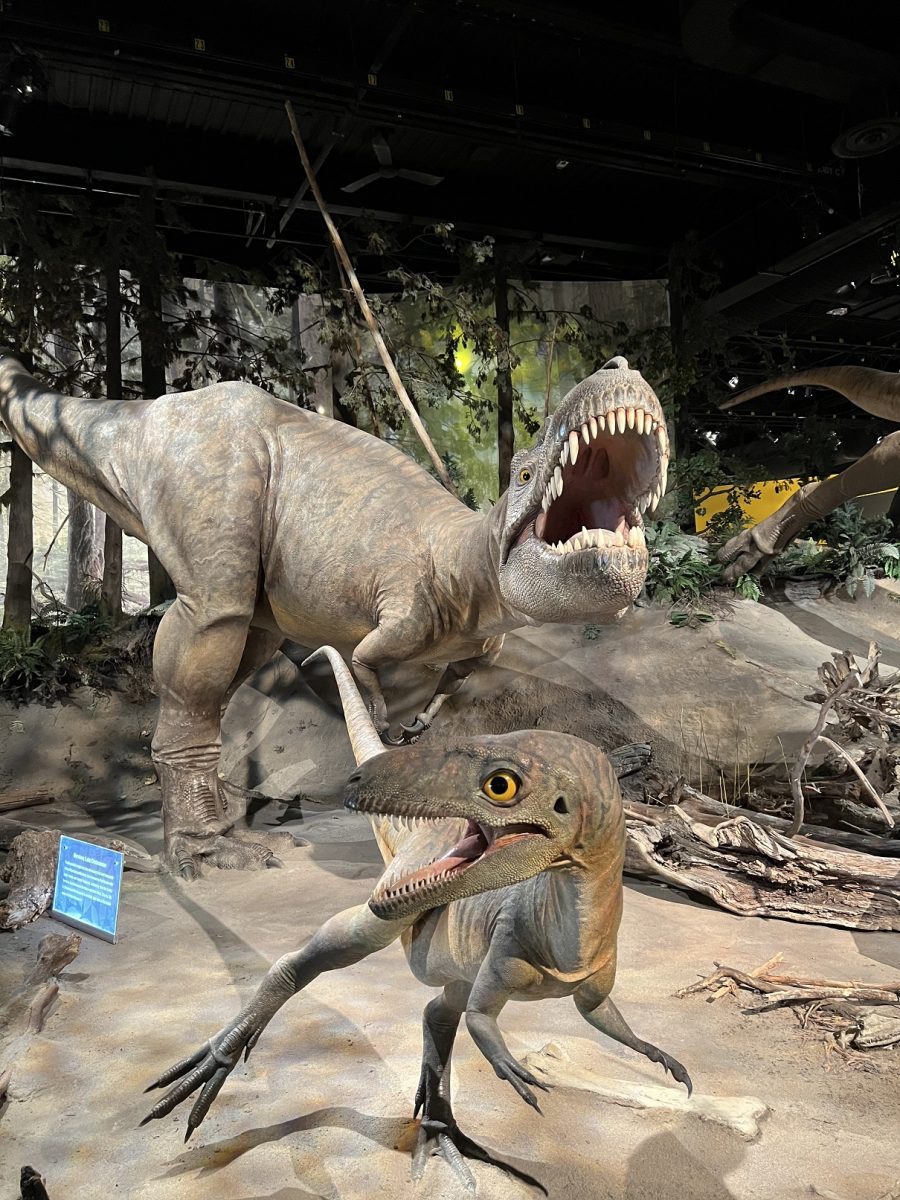
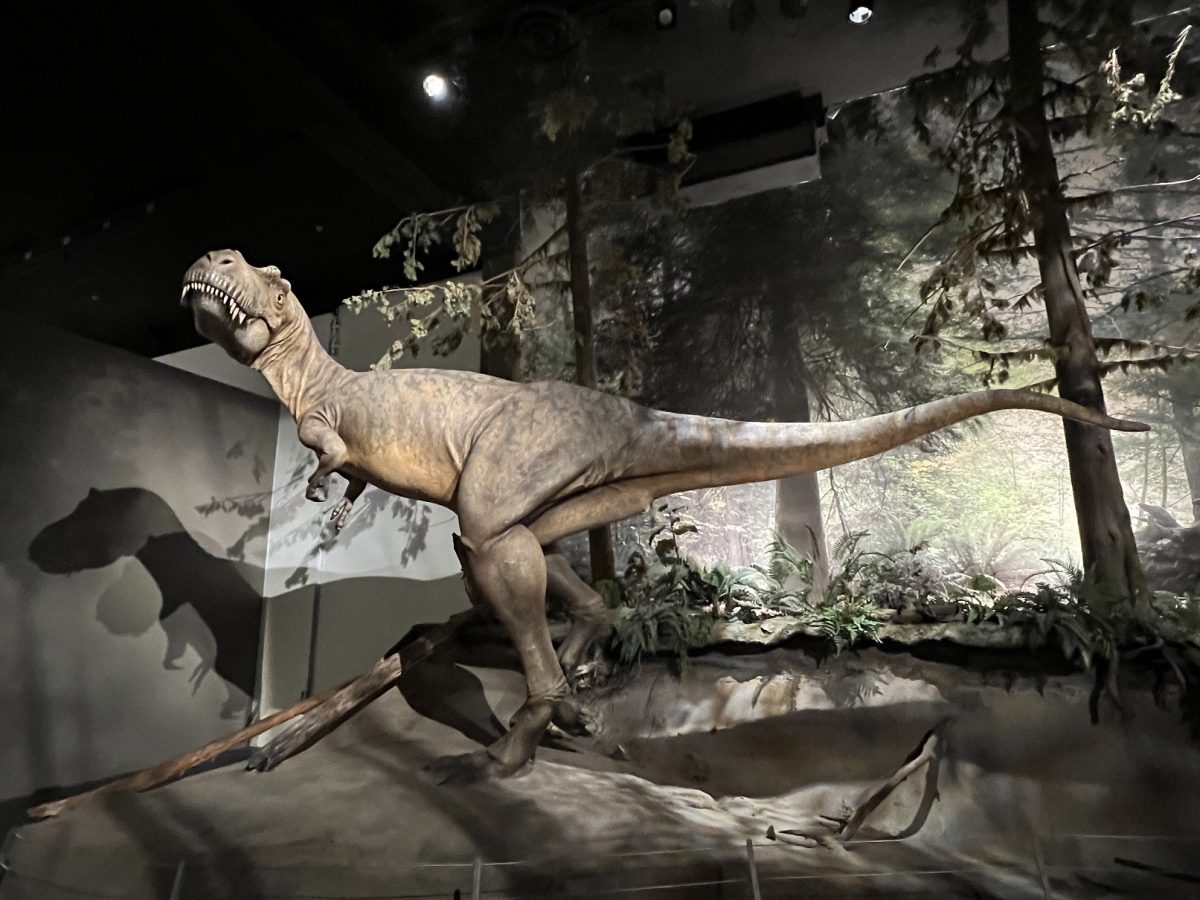
Their fossil collection is immense – too much to put on display. Just past this scene is a rotating room where they will feature new finds or pull from the collection. The claw of an Albertosaurus.
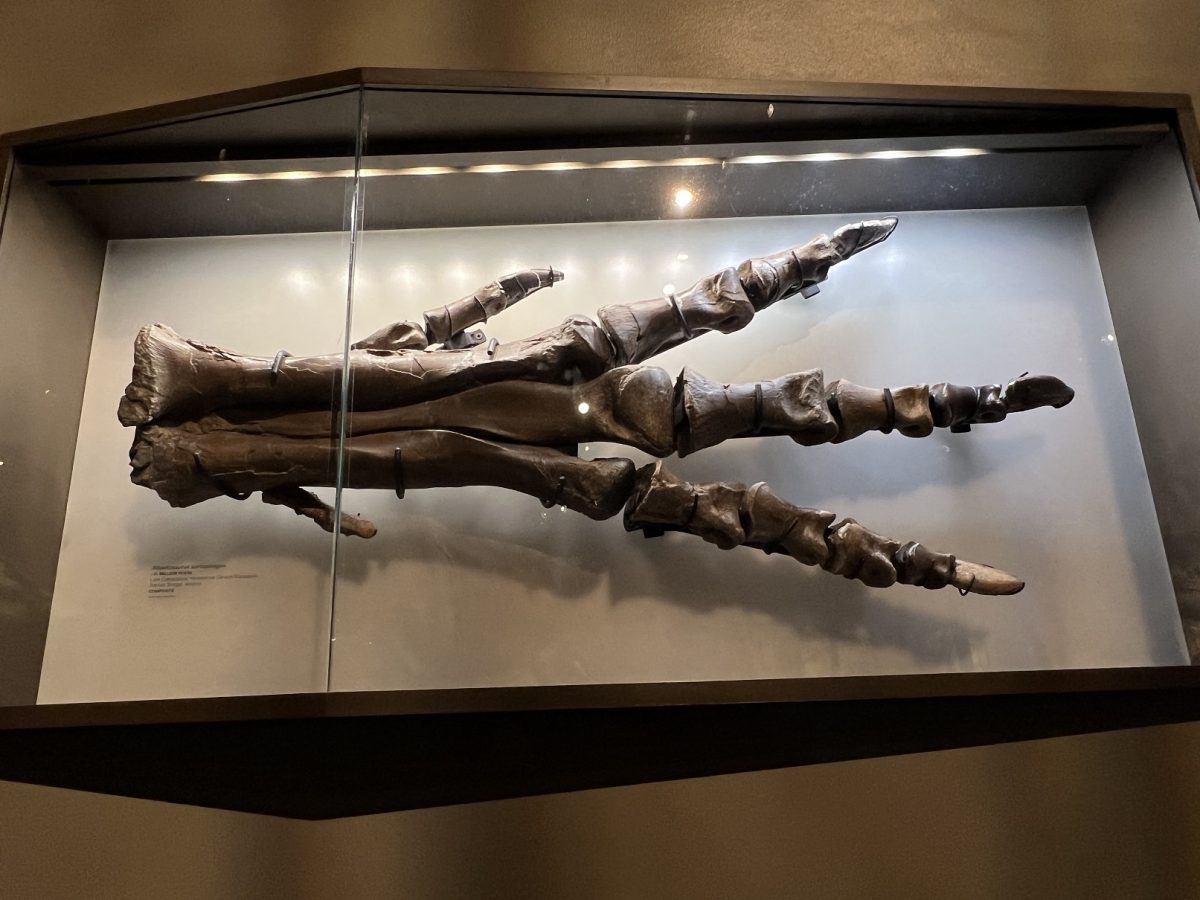
The exploding skull of a Daspletosaurus. The bones of the skull were found separate from each other but uncrushed. Some of the 41 bones were so delicate that they were digitized and 3D printed. It is with the skull that the species is mainly identified by.
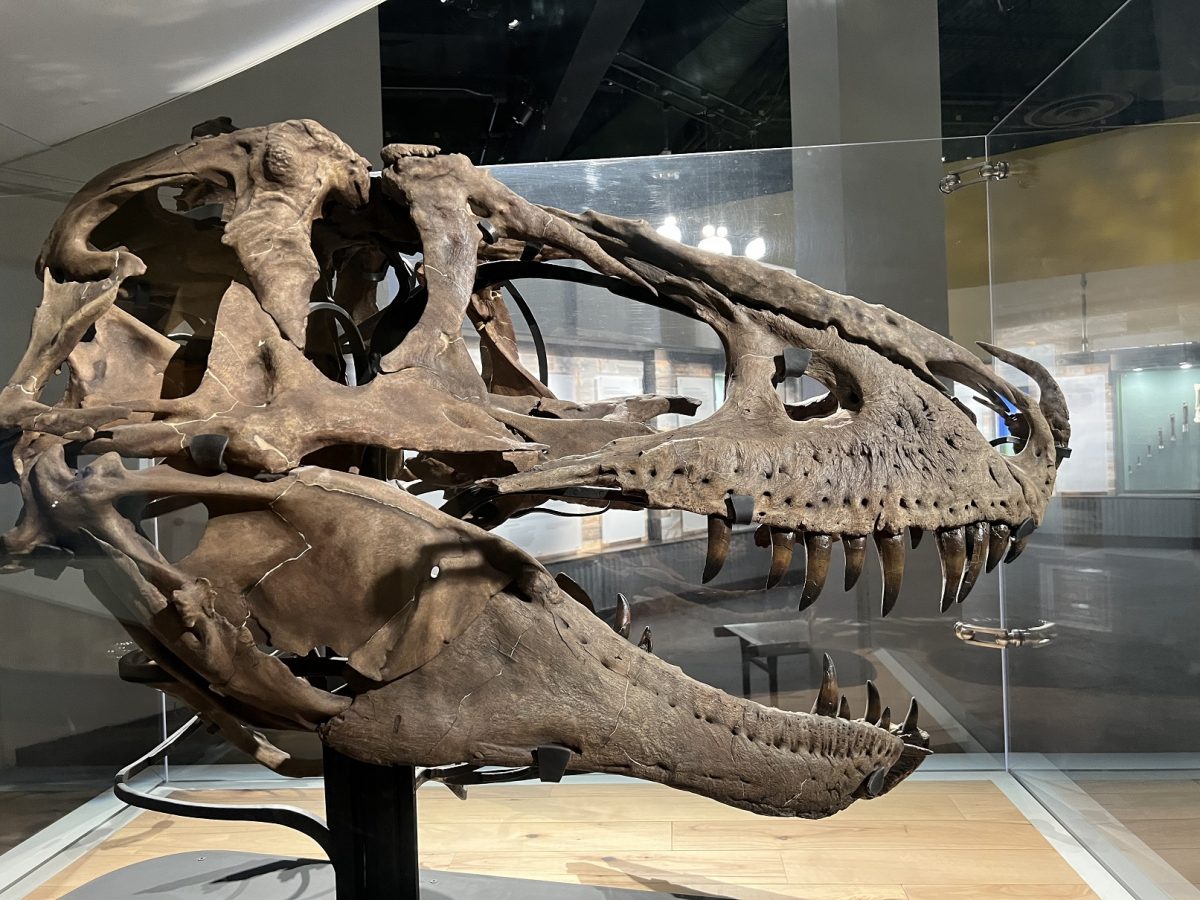
One of the most complete skeletons of a young Tyrannosaurus ever found in North America. Young adults were lightly built, had long skinny legs and smaller heads. Once they hit 11, the growth spurt starts (along with that teenage rebellious spirit no doubt)
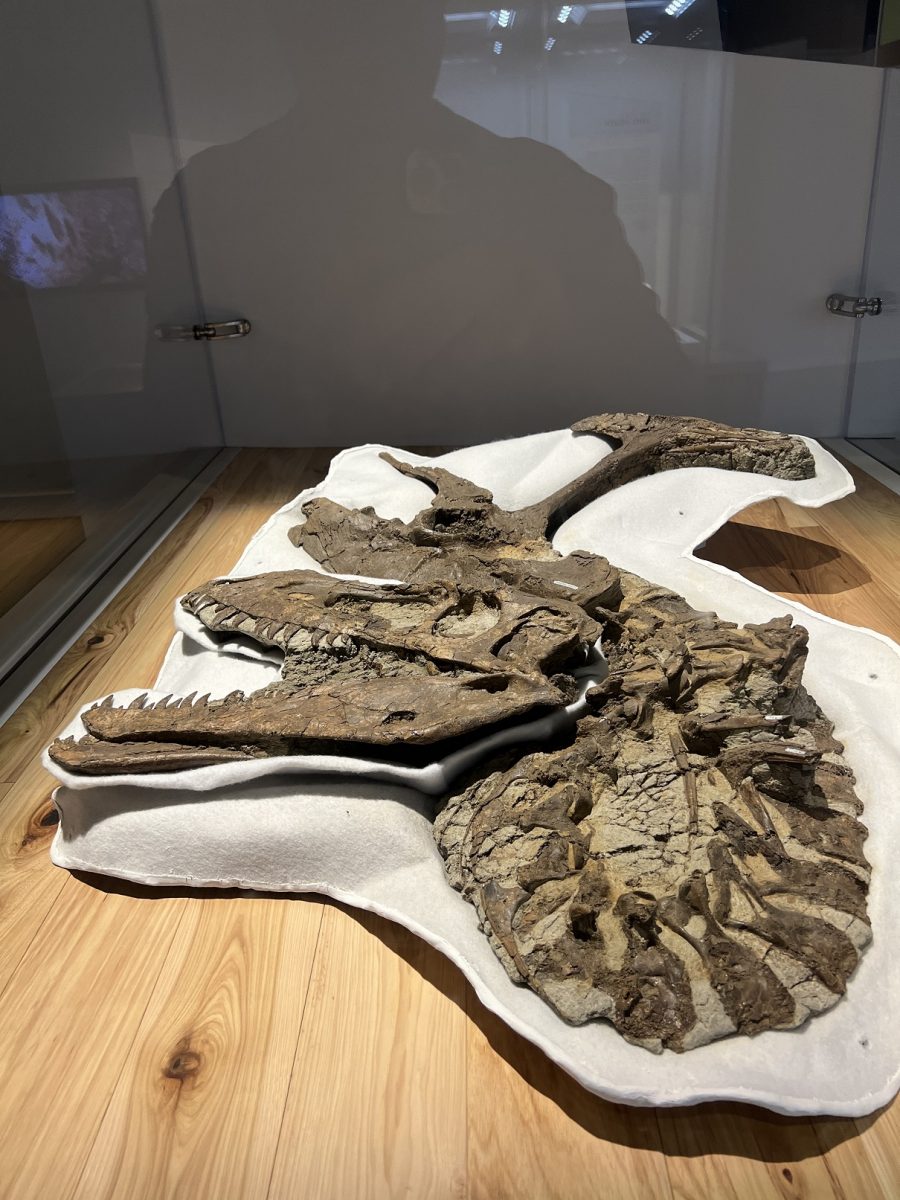
Corprolite (fossilized feces). Yeah, I know, not very interesting but I wanted to capture the whole shebang.
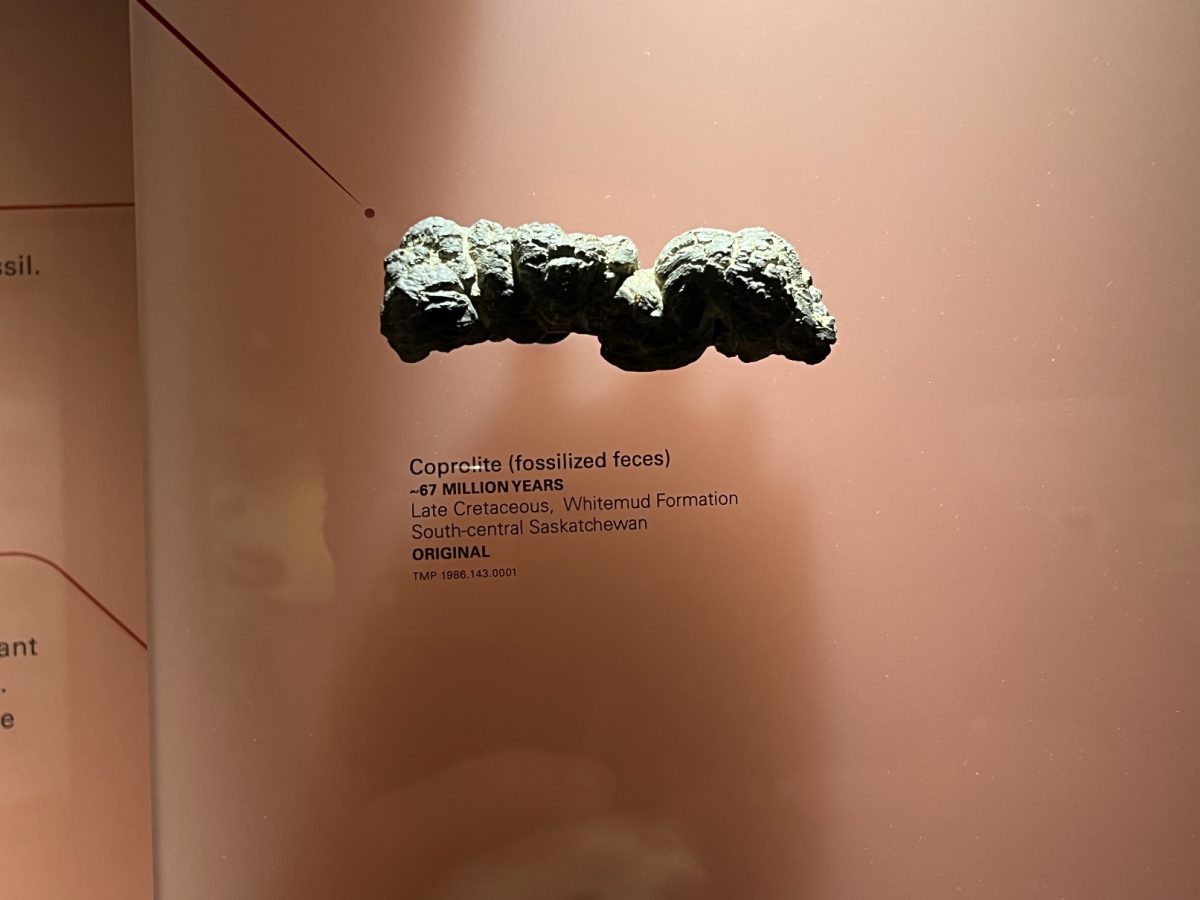
This display impressed me so much that I bought the t-shirt. It is quite large. A full skeleton of a young Gorgosaurus. The completeness of the bones along with sand suggests it died but was quickly buried in the river for preservation.
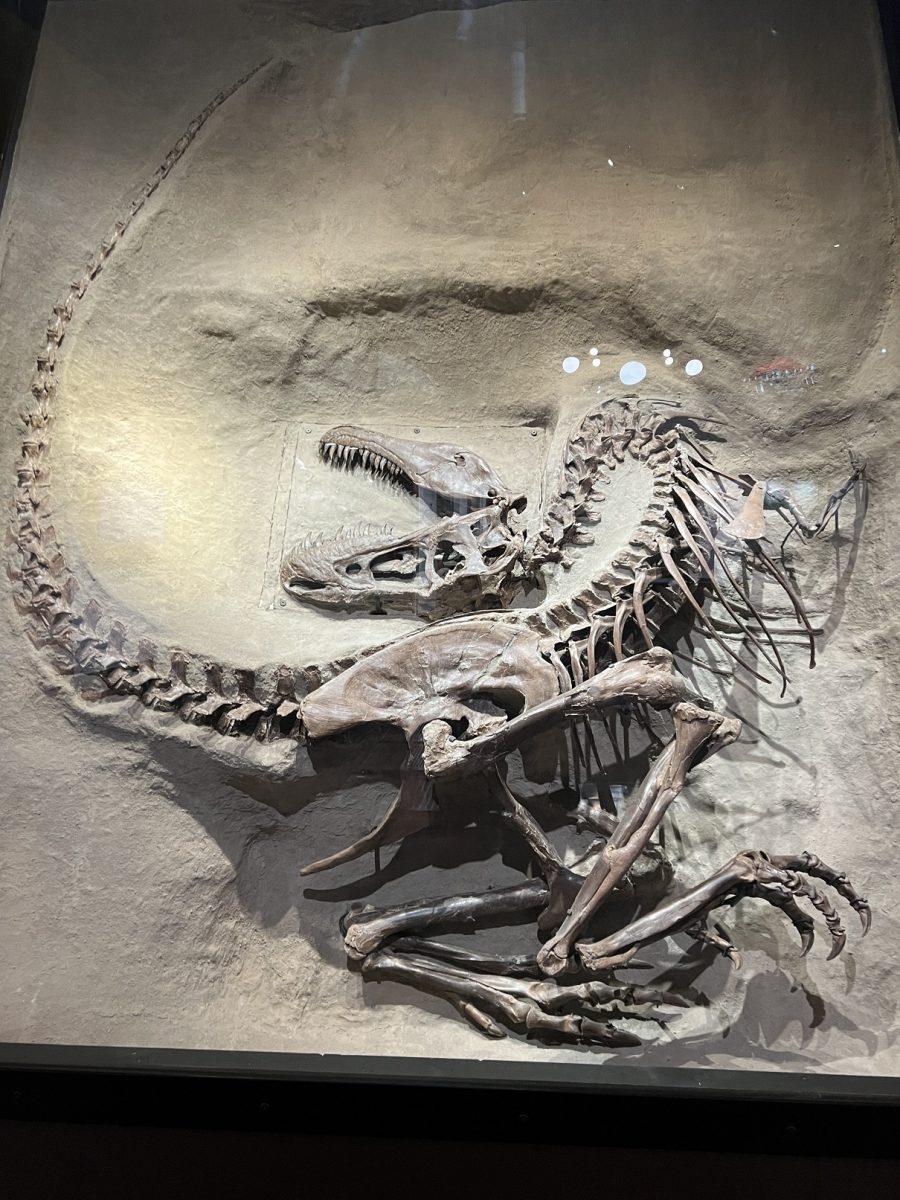
Black Beauty. Tyrannosaurus Rex only existed in Alberta for about 1 million years at the end of the Mesozoic Era (along with the Triceratops). The weather in Alberta had got warmer, which the T Rex liked.
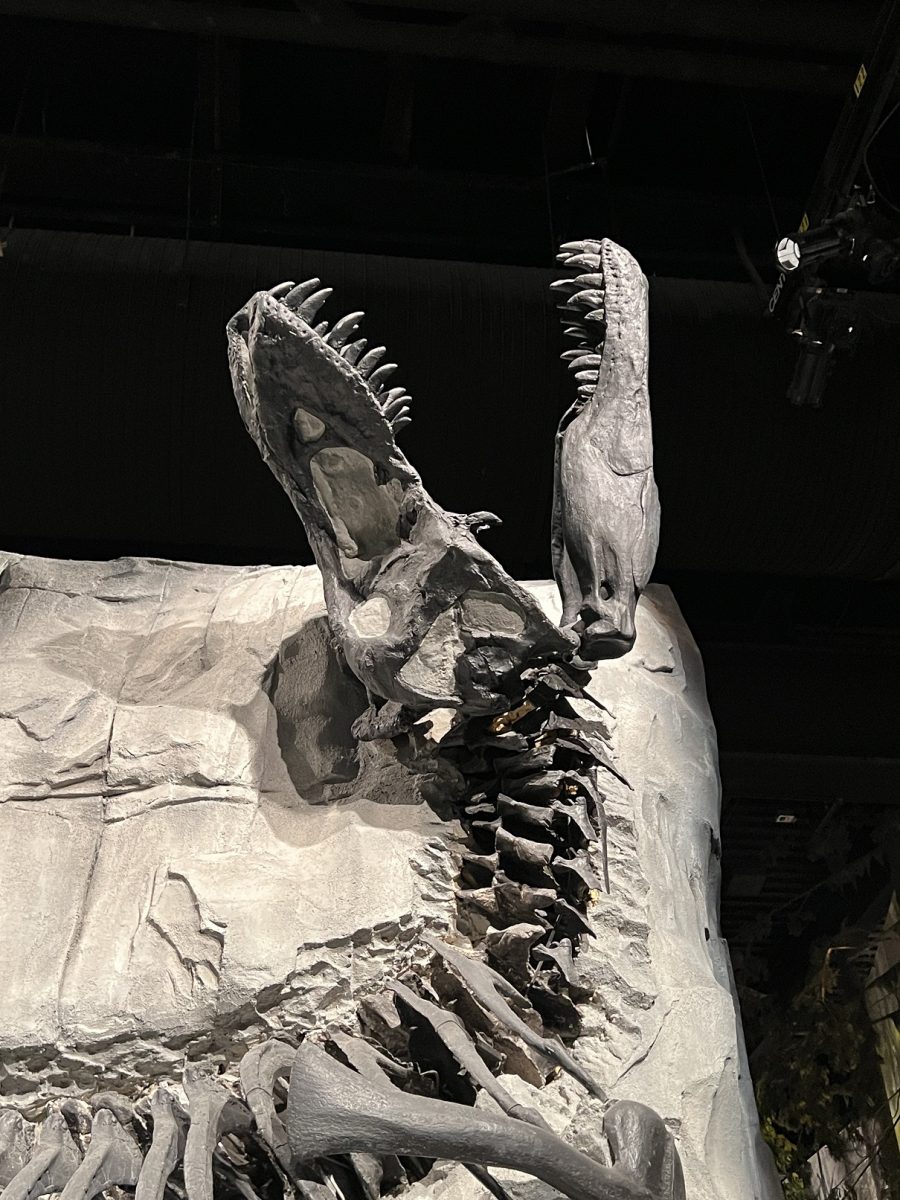
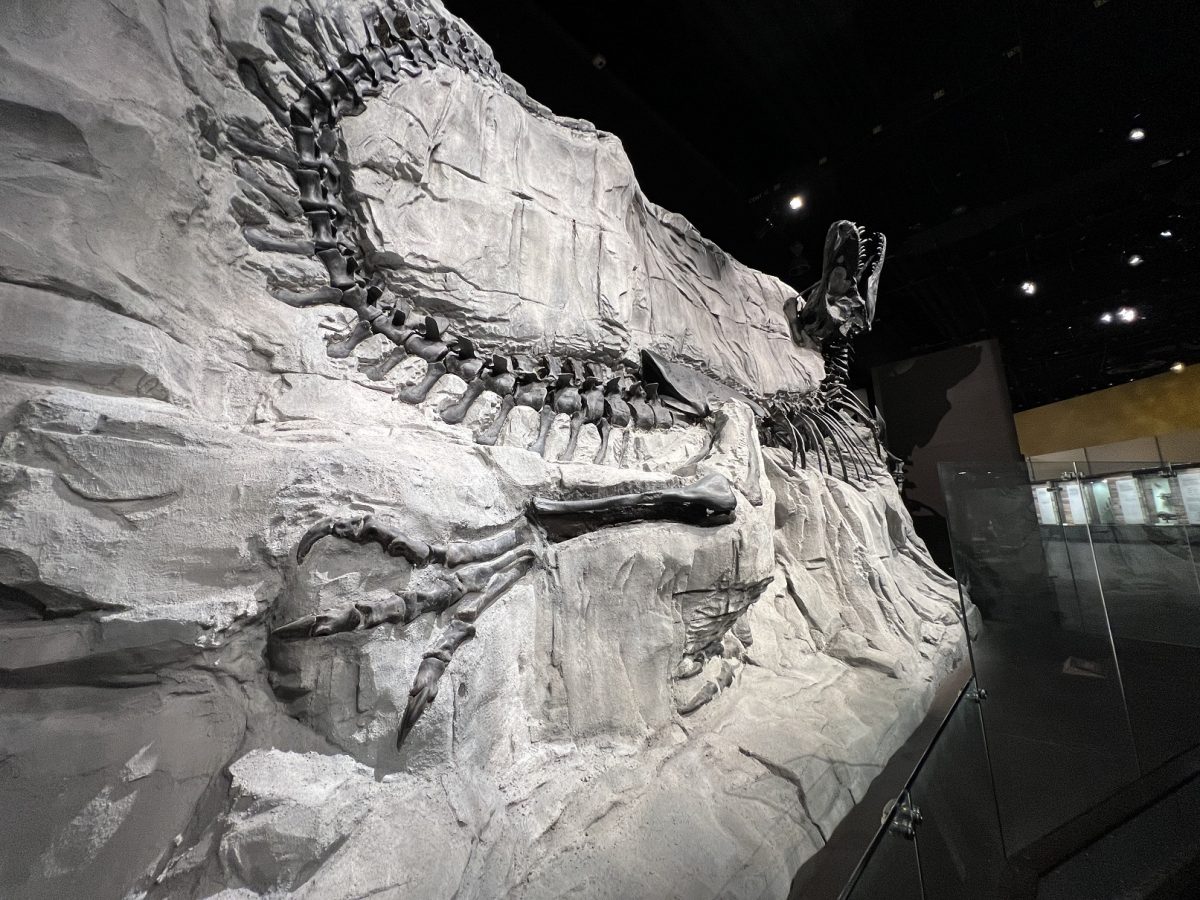
The preparation room. I’m guessing there are days when you can see people working.
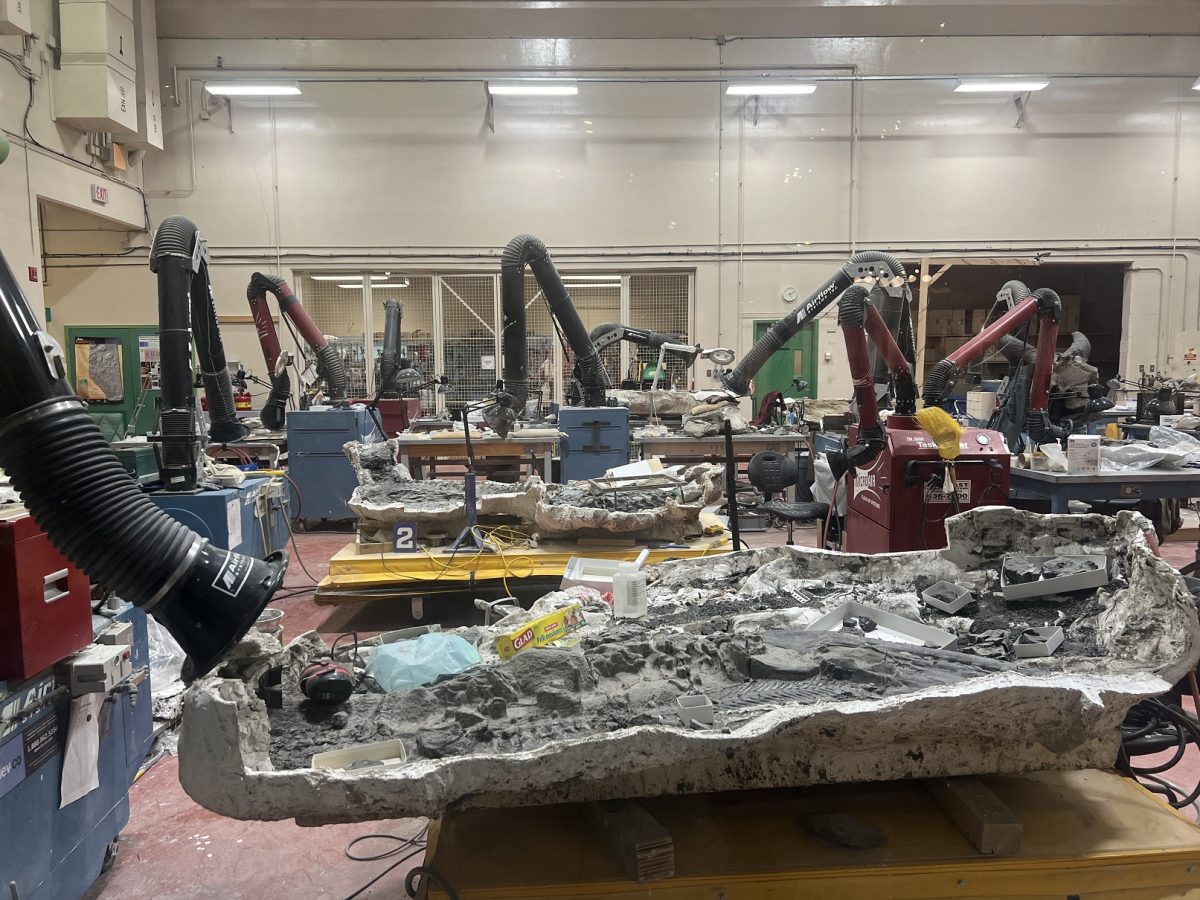
Ammonites are hard shelled squid like creatures that lived 400-66 million years ago. The pressure over that time, along with heat and mineralization created a colourful material called Ammolite. It is used in jewelry. It makes them both fossils and gemstones.
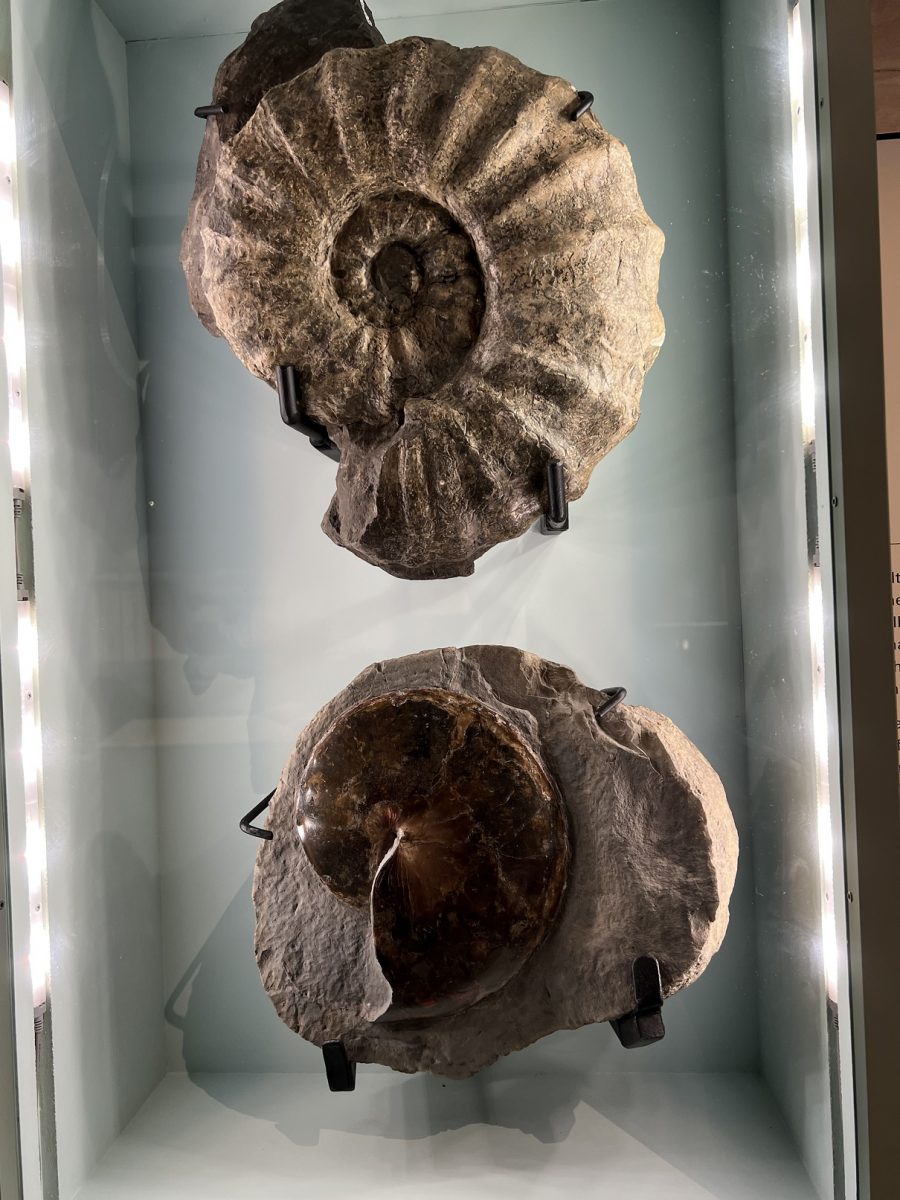
Borealopelta markmitchelli. The best preserved example of an armour dinosaur in the world. And the technician who prepared it, Mark Mitchell, got to have is name added to the new species. It’s also the oldest dinosaur found in Alberta – 35 million years older than the other fossils in the collection. I found this one incredible to be in such shape after millions of years.
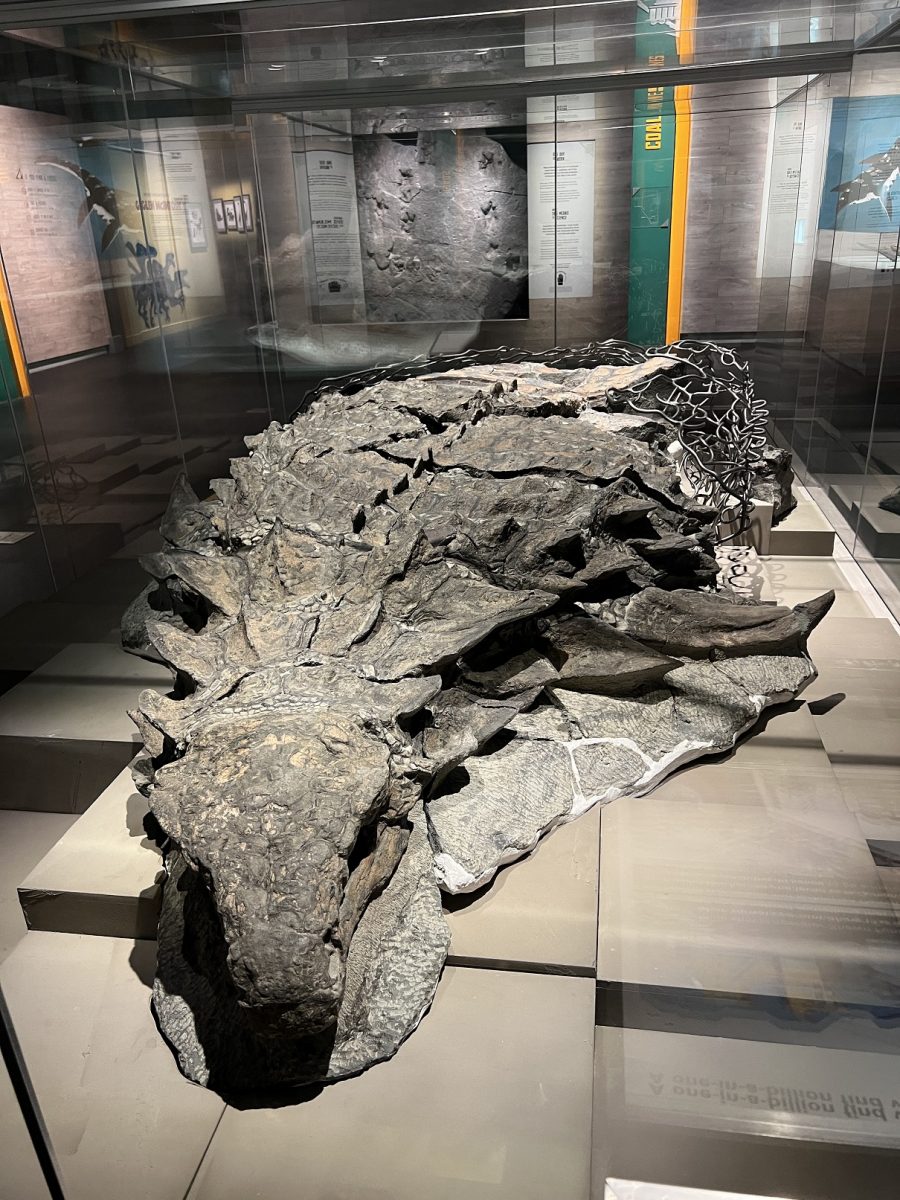
In the Tyrrell, you walk through a series of galleries. The layout on the map is easy to follow and the direction of the walkways is simple. Now, the next gallery really impressed me. It provided a counter balance to all the fossils. It was the Glen McIntosh Gallery.
Glen McIntosh, born in Calgary, is fascinated with dinosaurs and went to the Tyrrell often while growing up. He became an animator, turning bones to colour. He has been involved in the Jurassic Park movies including the latest Jurassic World: Domination. Learn more on his website.
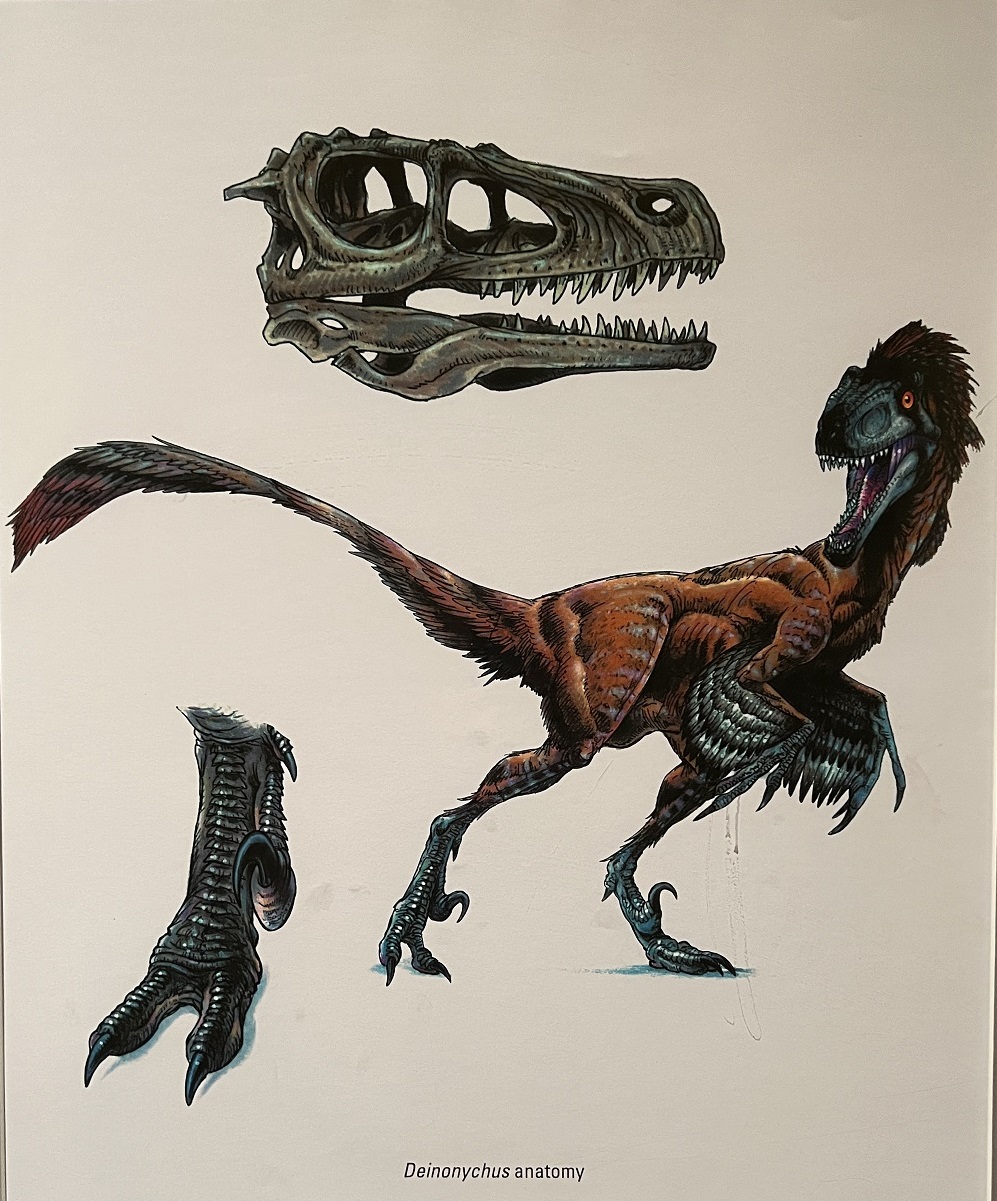
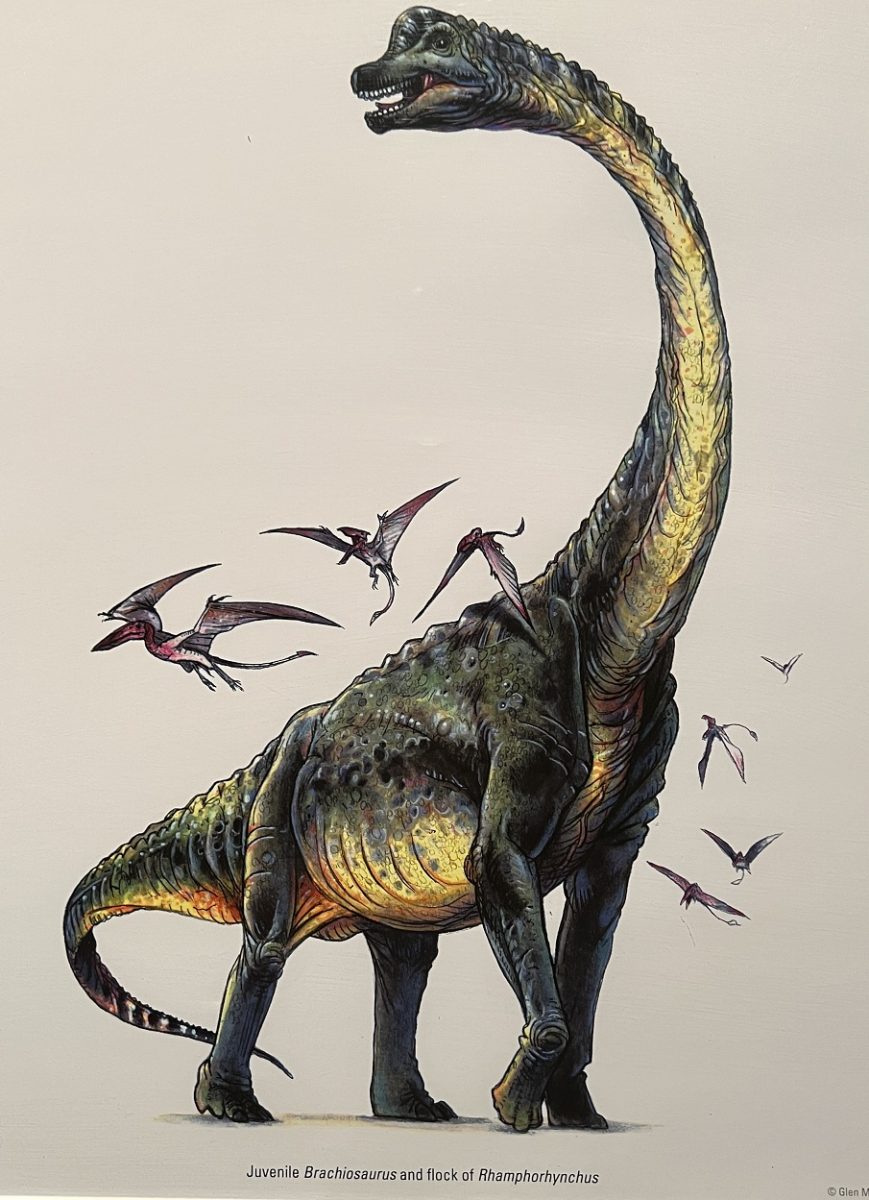
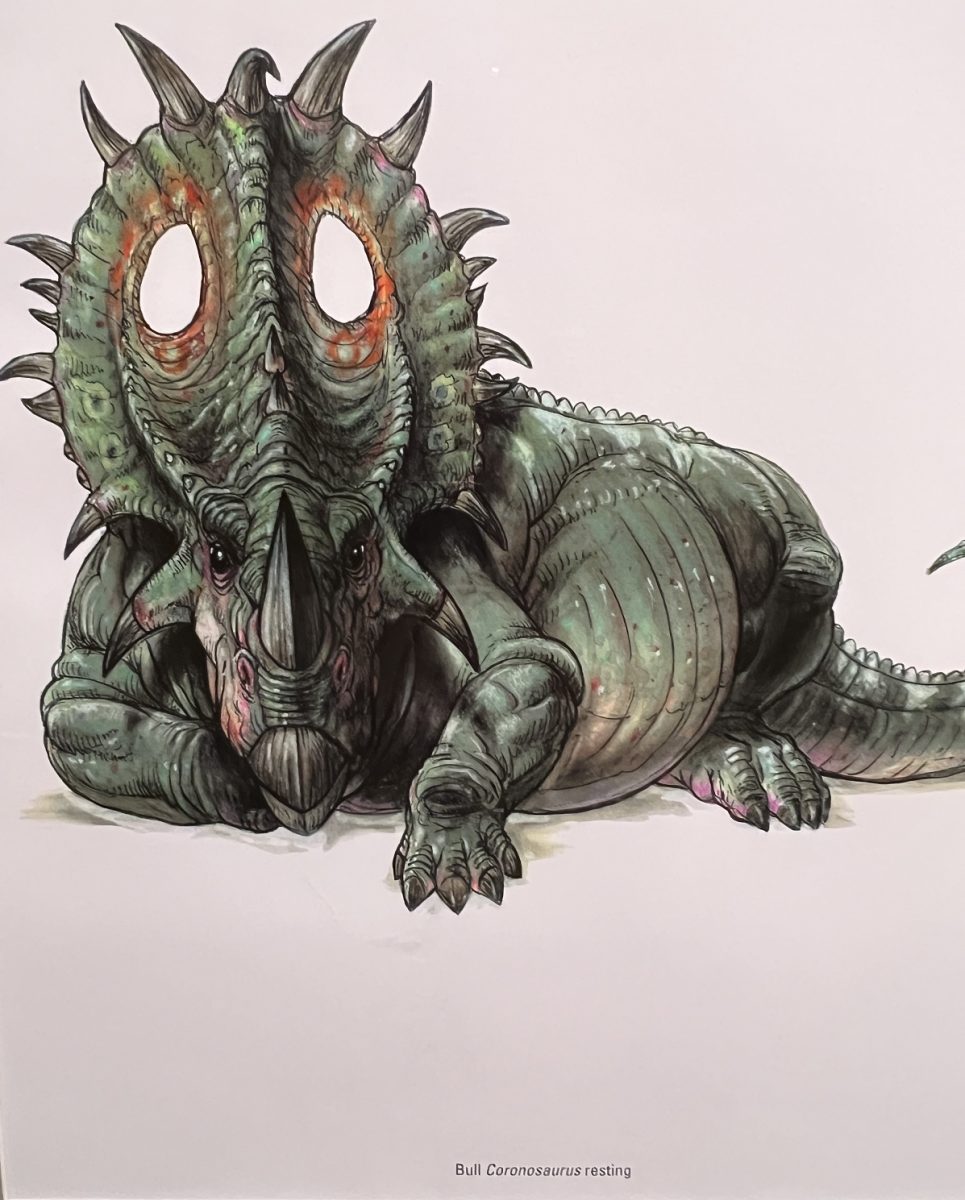
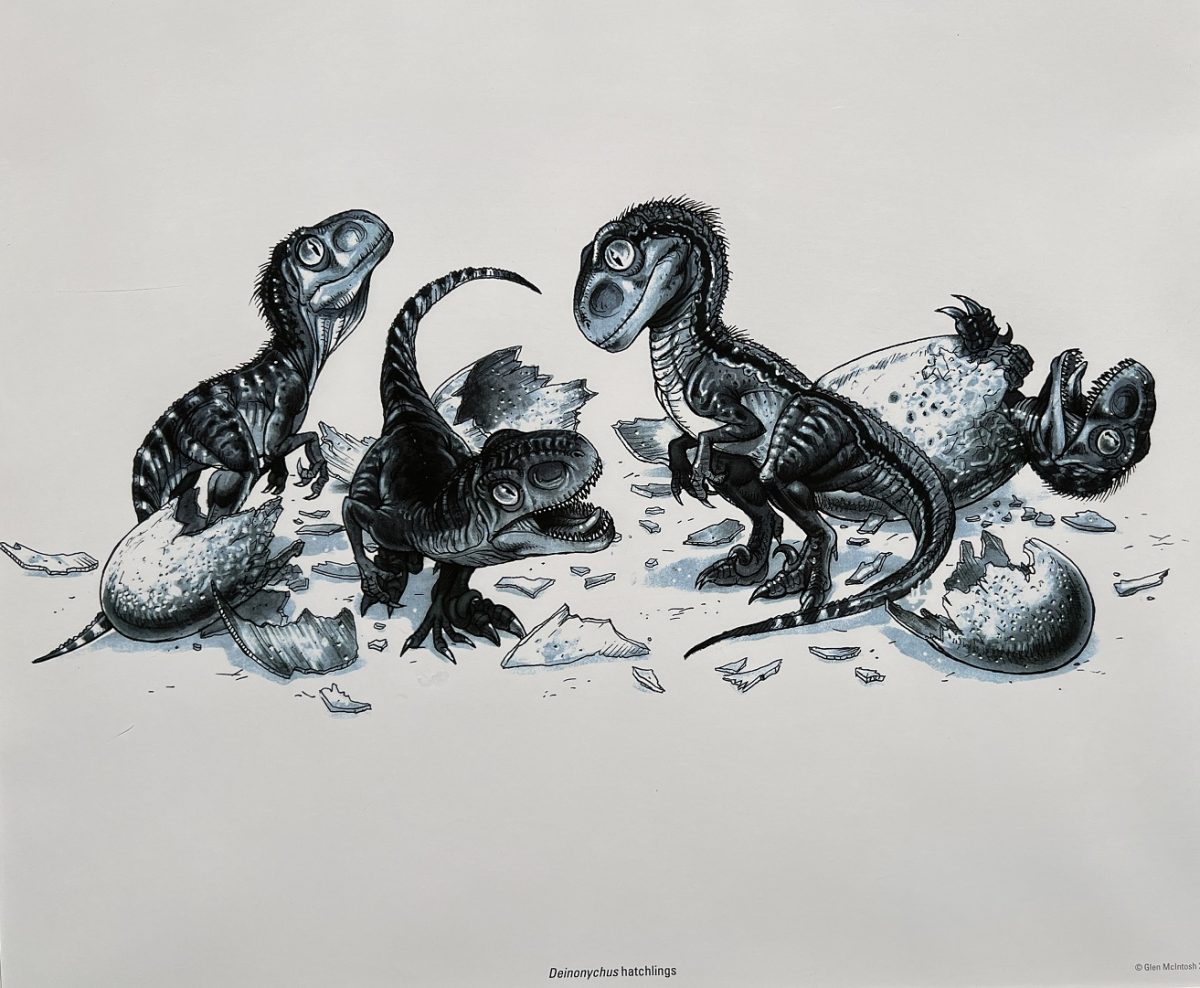
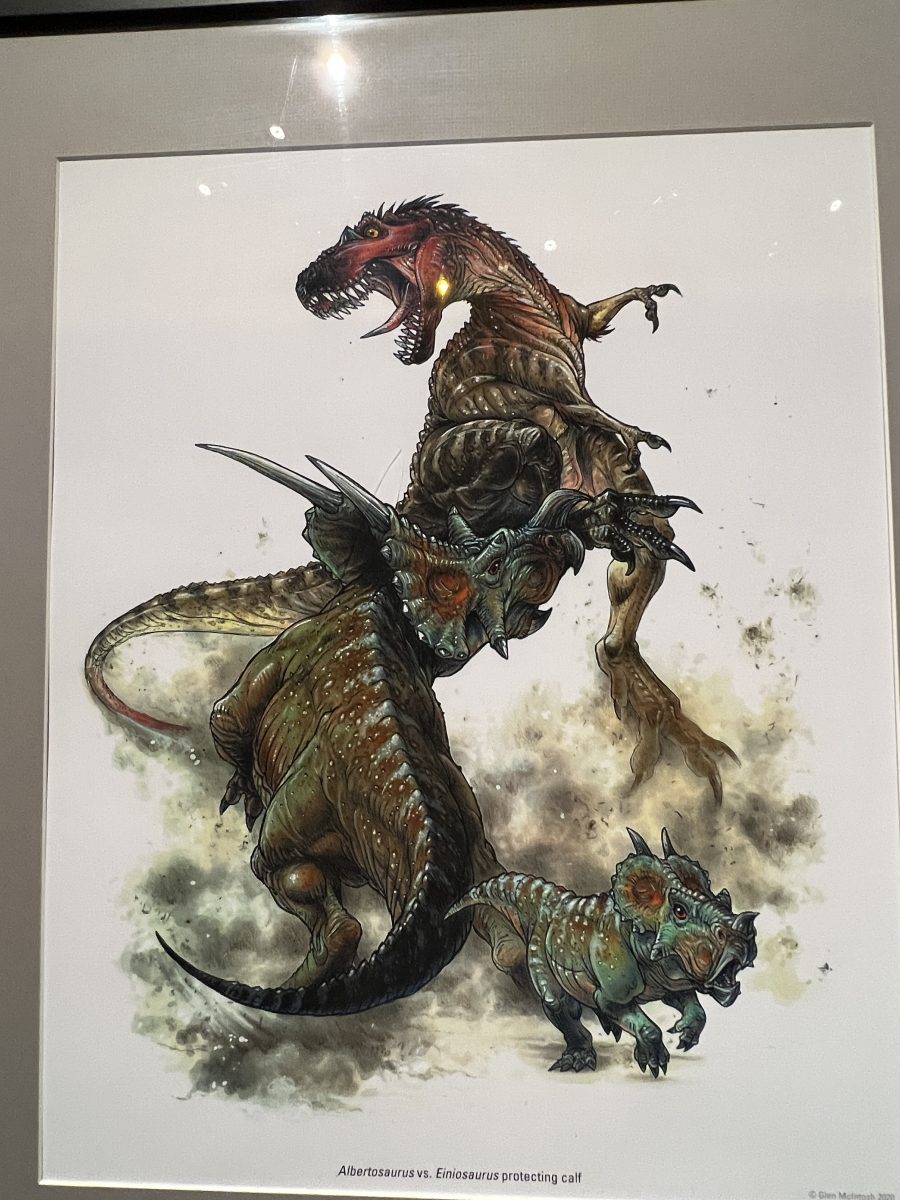
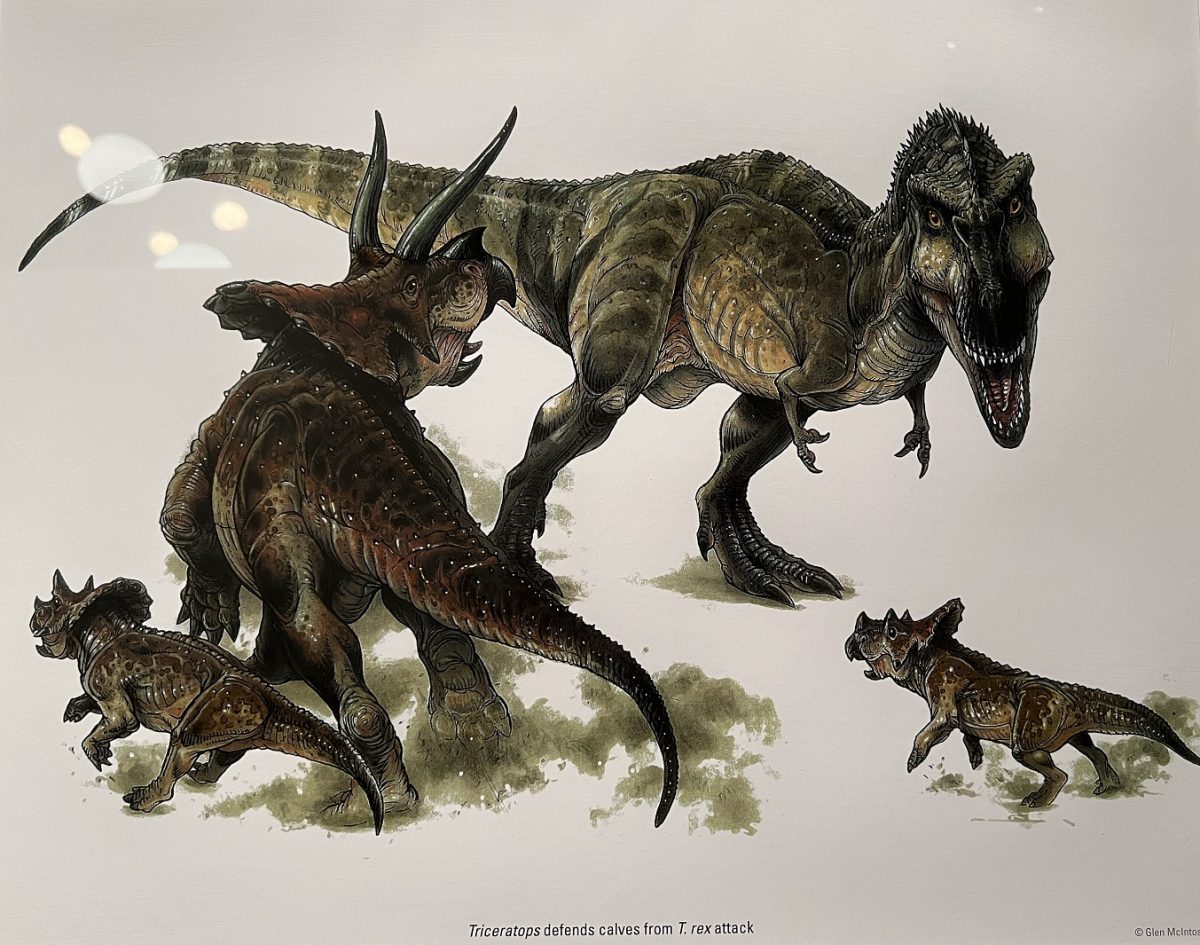
This view is looking down into the Cretaceous period – T Rex and Triceratops.

Before we get to those big guns, we go very small. The next gallery has had to enlarge the very small creatures of this next archeological period. As the voice over the speaker explains the scene, that part of the gallery lights up. The little orange guys are attacking the big guy. The floor is clear plastic so I’m looking down on this as I walk across.
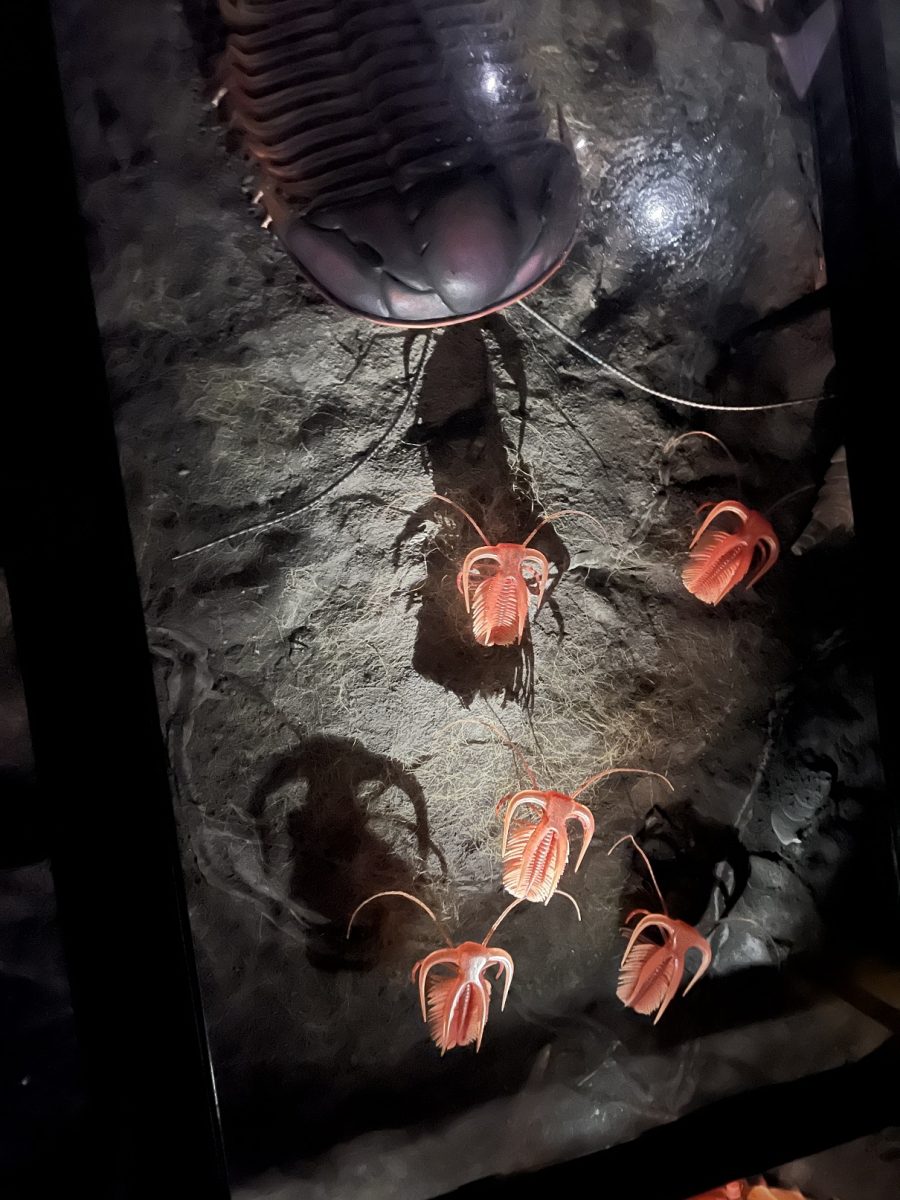
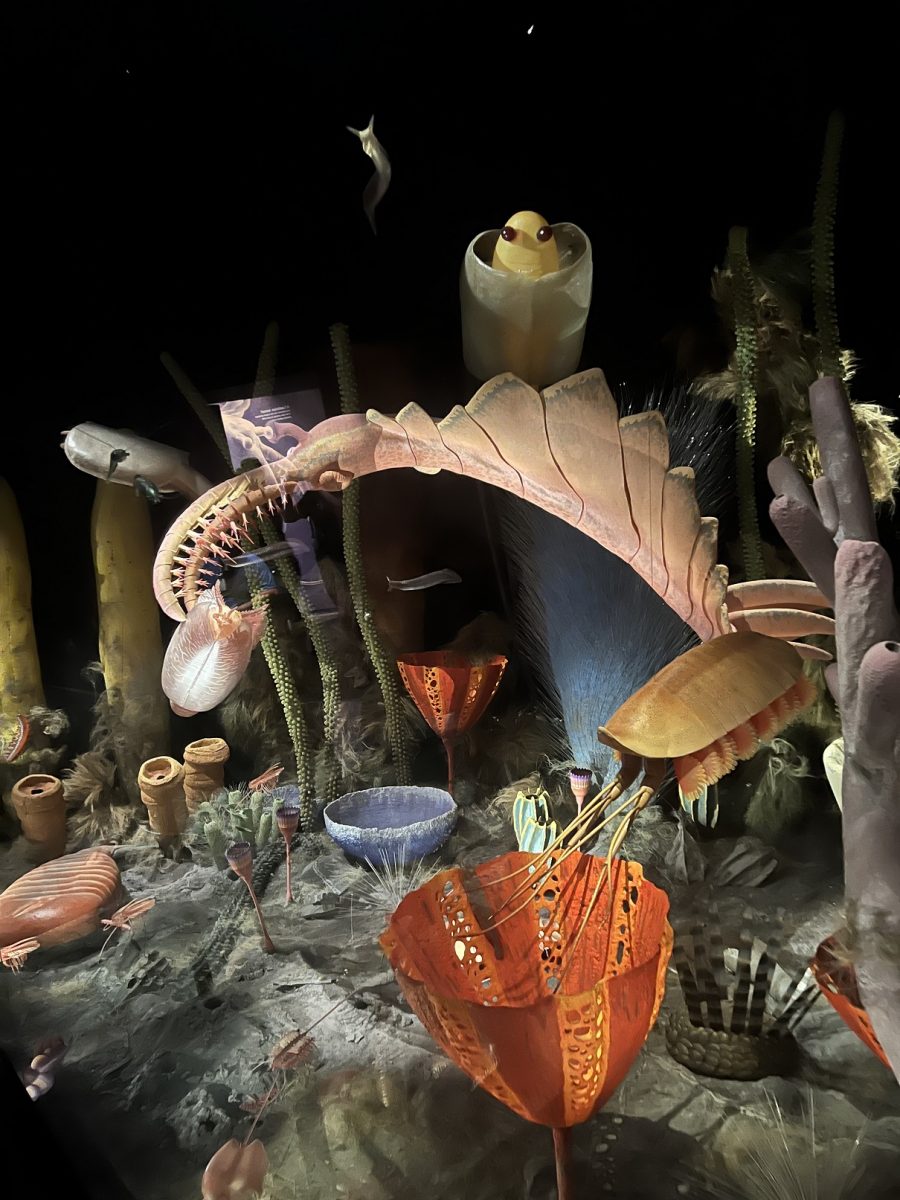
One of the things the Tyrrell did that helped me to understand was to explain the earth’s extinctions. There have been 5 extinctions (so far). The next galleries explain each extinction with a sign post of detailed information. This was #1
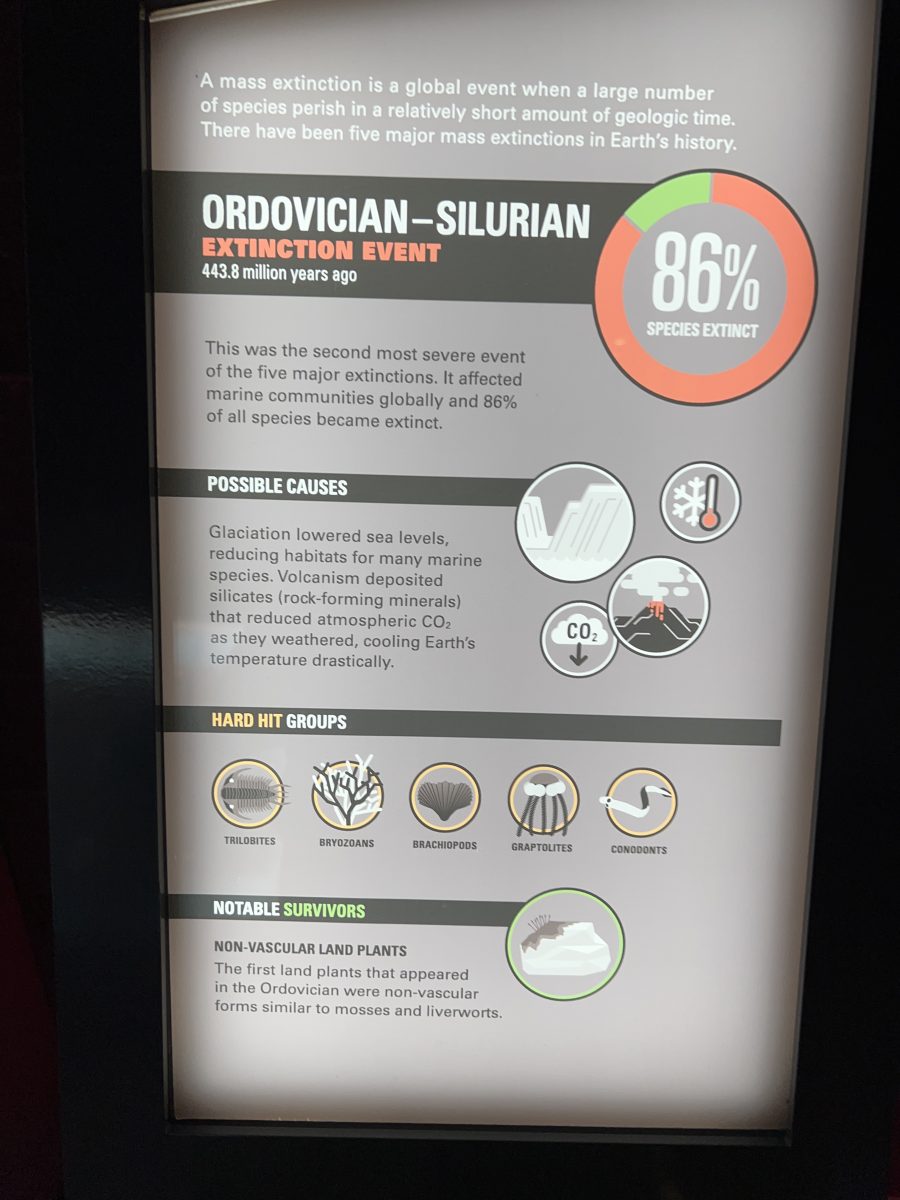
These fish were caught in a dry spell in the Devonian period. The slab contains 114 fish and is one of several. Scientists were able to determine 8 different species.
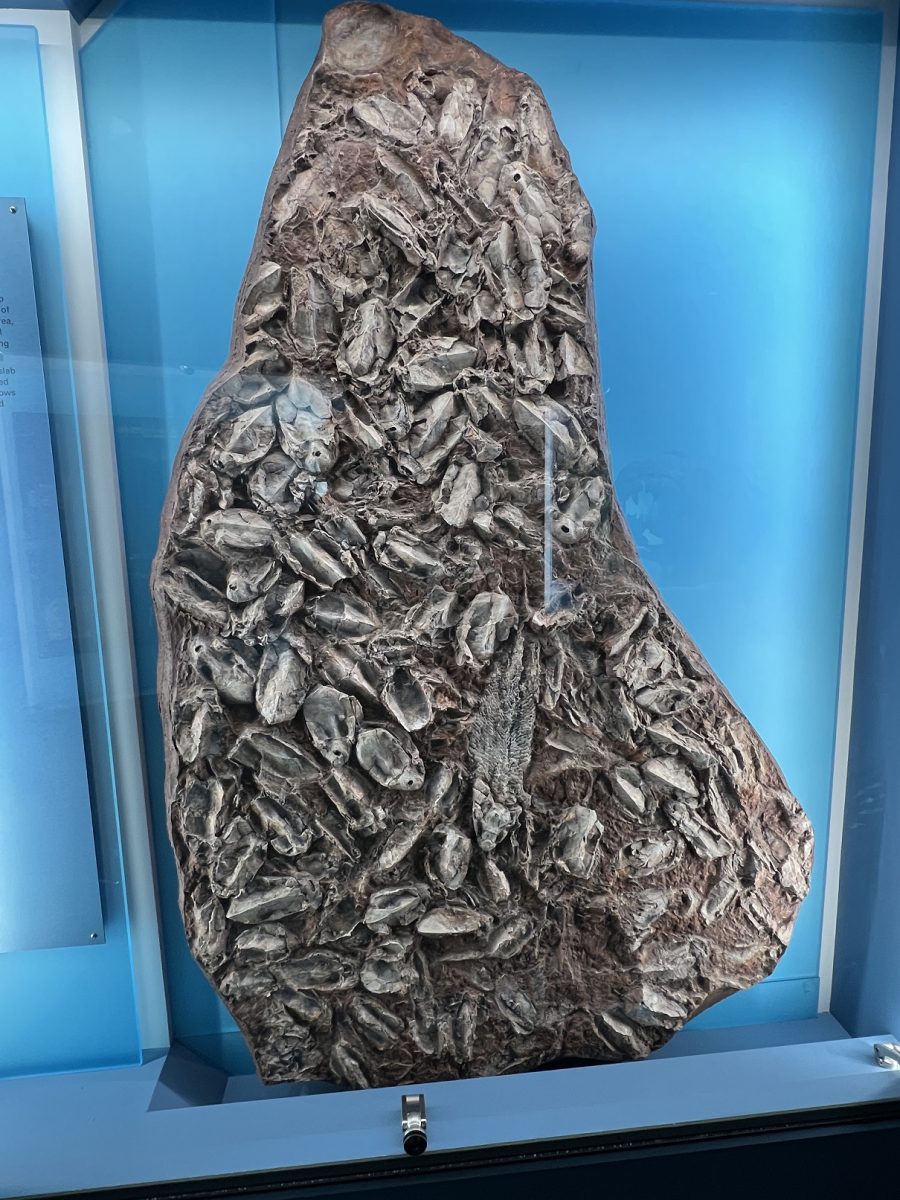
Another Devonian fossil – Dunkleosteus. A powerful swimmer and top predator. It had no teeth. Instead the bones of his jaw formed sharp edges for cutting prey.
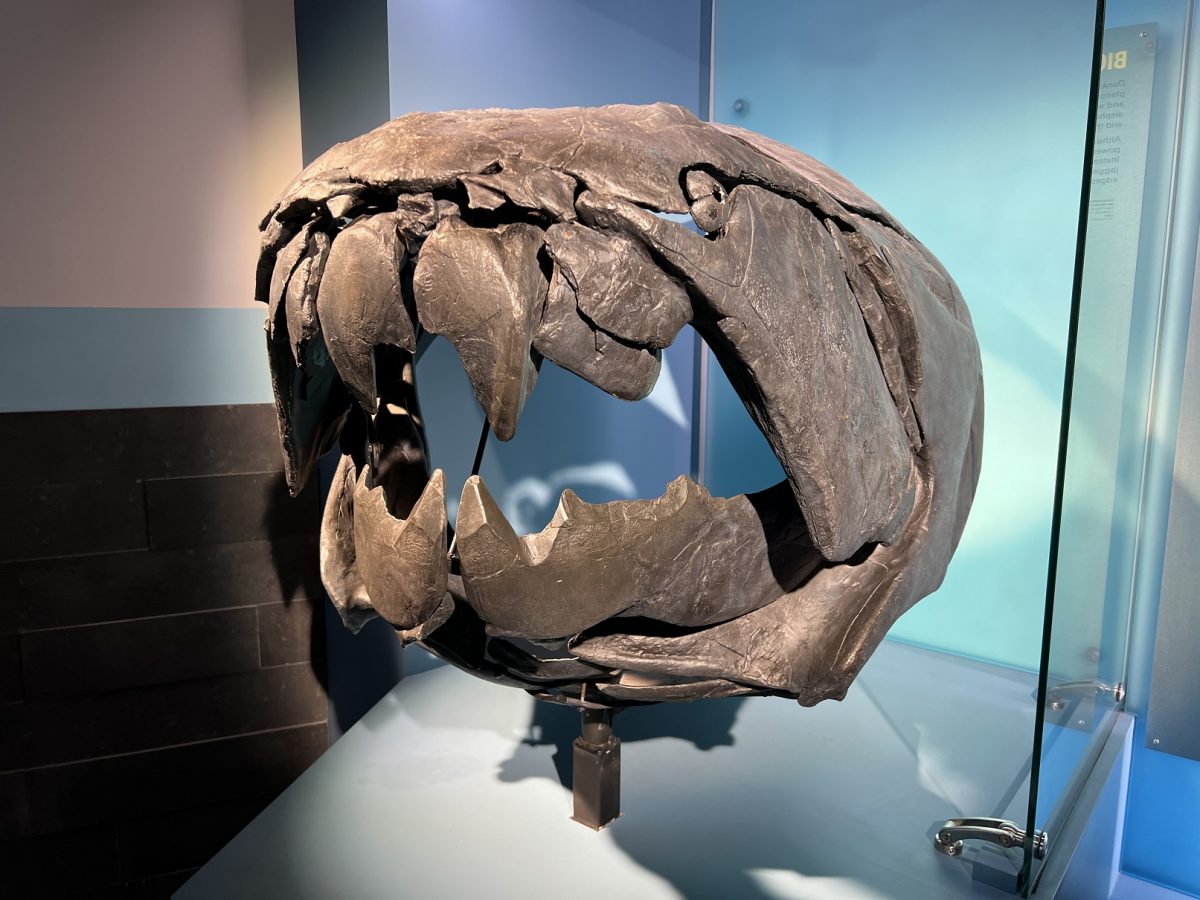
There was a section that covered plant life. Although not as engaging as Dunkle, it is an important line of study.
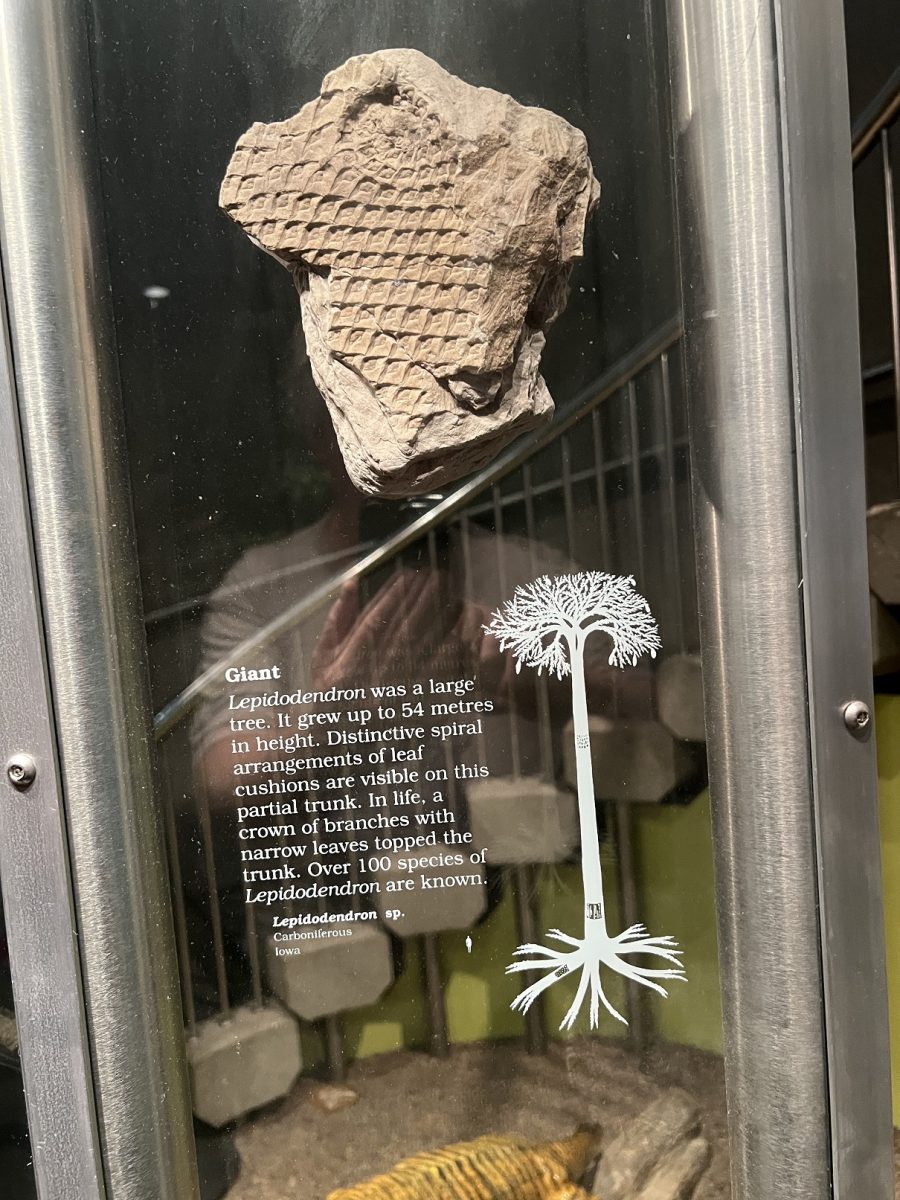
Extinction 3 where 96% of the species became extinct.
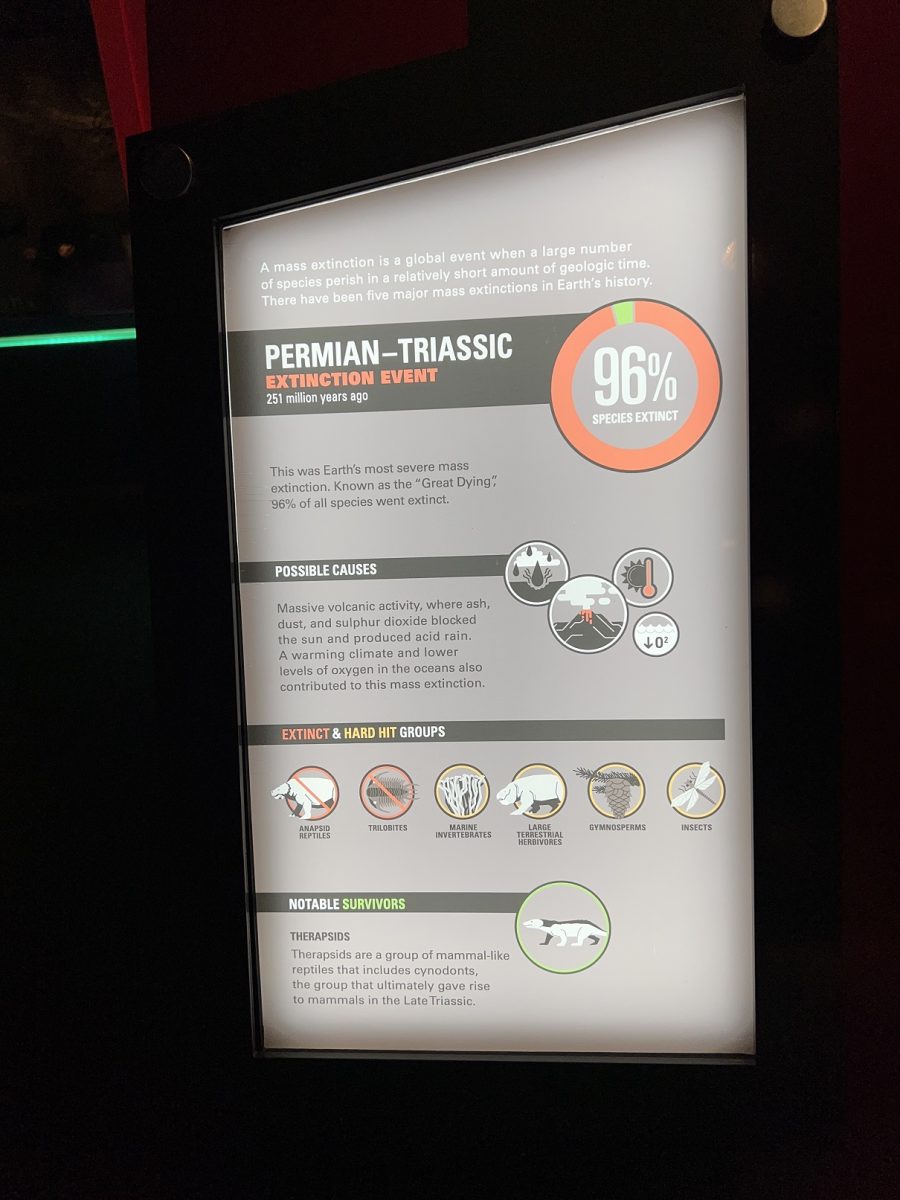
This one practically got its room. The remains of the world’s largest known marine reptile – an ichthyosaur. At 30 metres, it took 3 summers to extract the fossil from the ground. It was found in Northern British Columbia. It is 220 million years old.
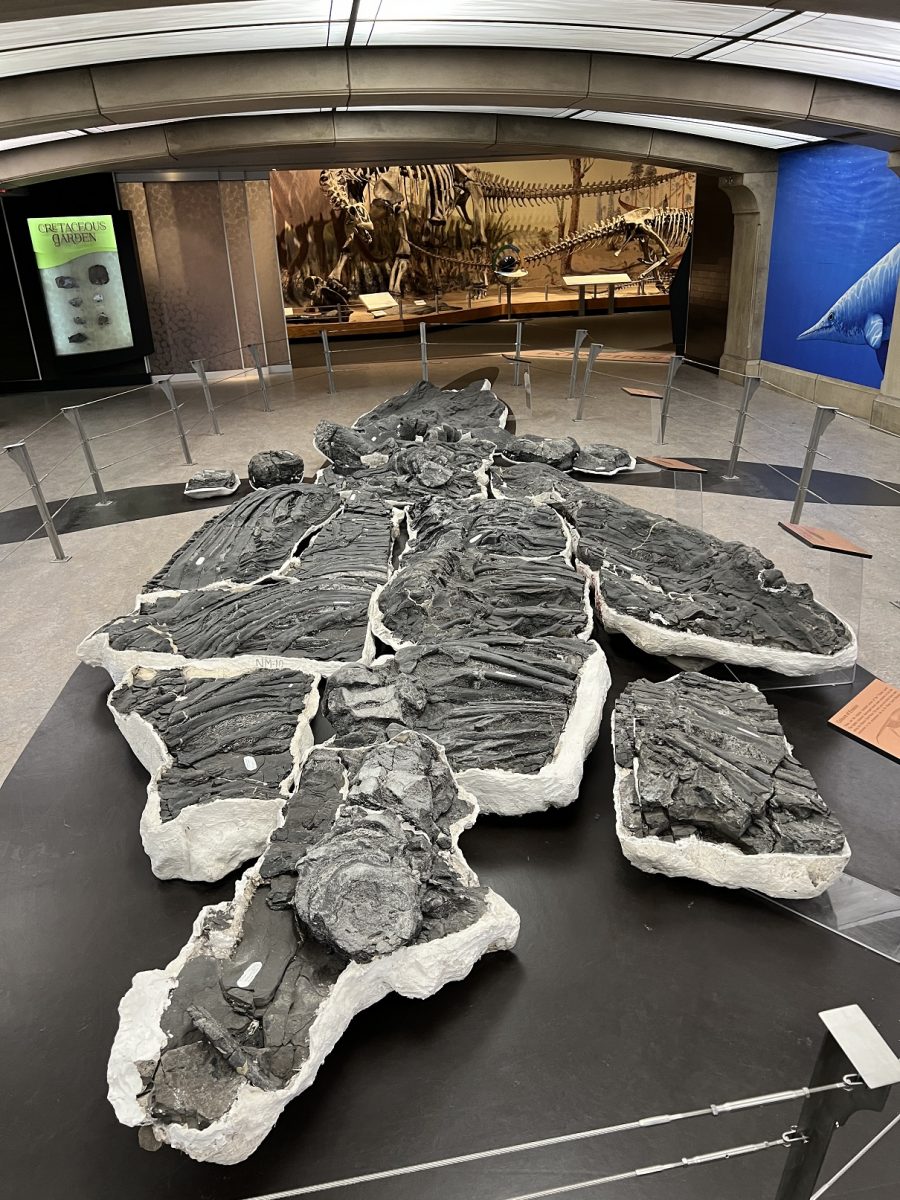
The rock that covered it was very hard. Jackhammers and rock saws were needed. The natural cracks were used to separate the pieces. Encased in plaster and burlap, they were removed by helicopter. The largest block, containing the skull was 4 1/2 tonnes. A Sikorski helicopter was used.
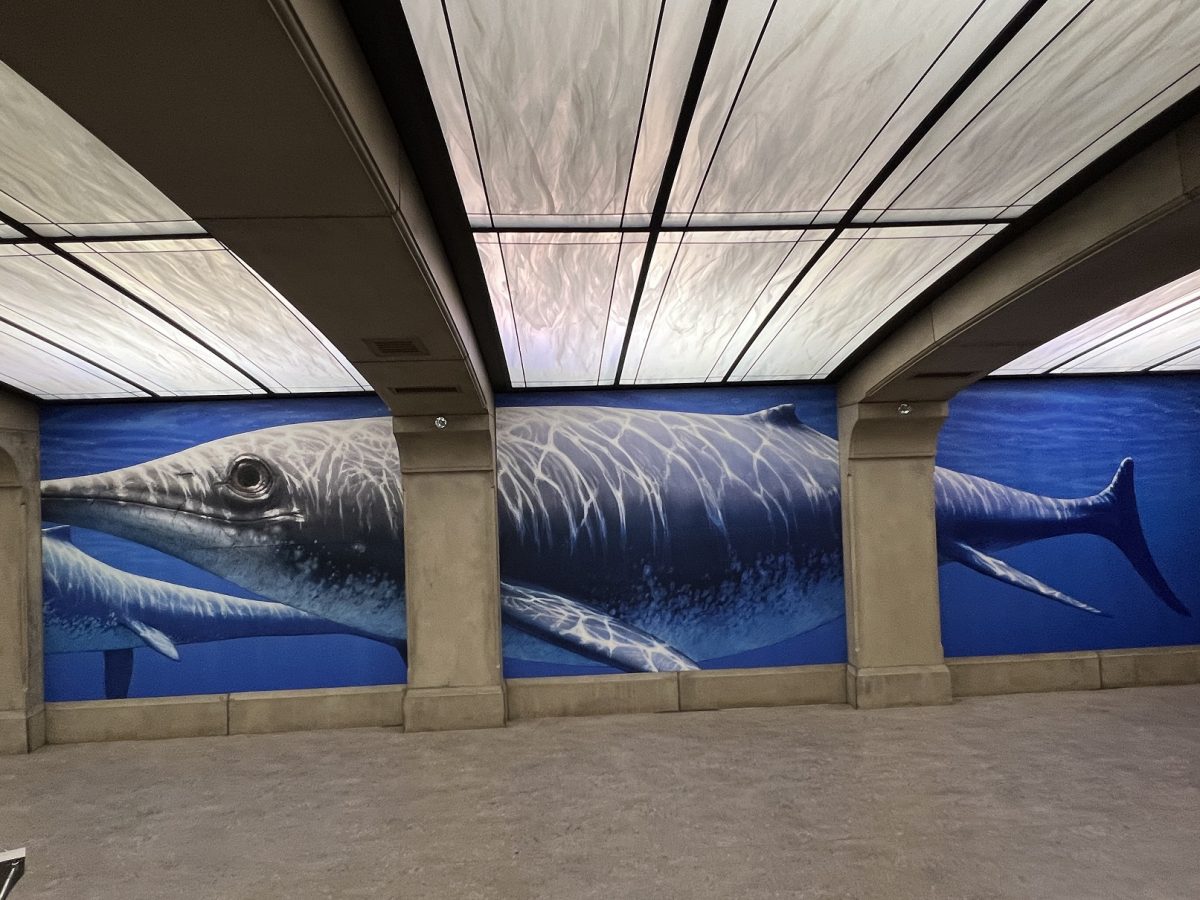
Allosaurus. The most common carnivore 150 million years ago. It has sharp, pointed, serrated teeth for tearing flesh. The exhibit has it attacking a Camptosaurus.
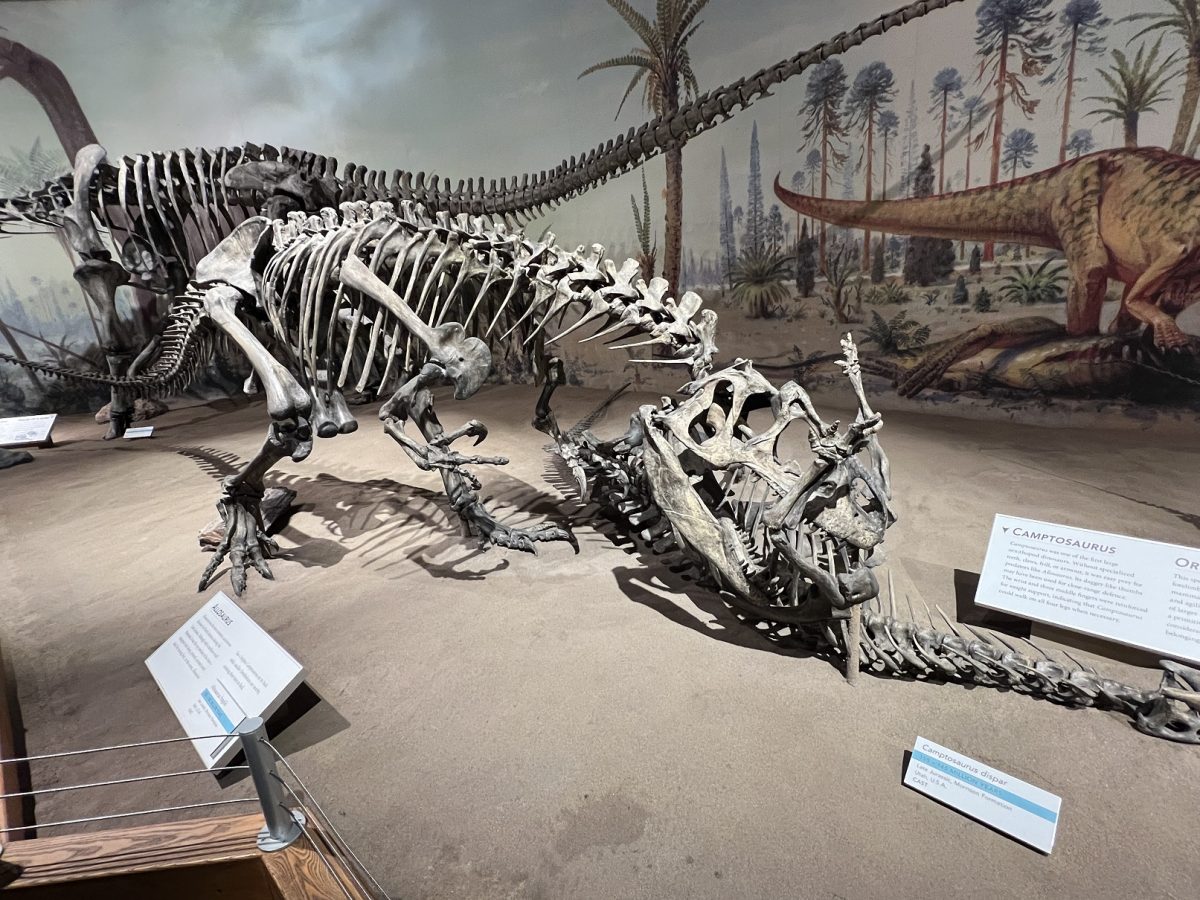
This gives an excellent example of a dinosaur in motion. Unlike other reptiles, its limbs were oriented vertically, directly under the body. They walked on their toes with the heels off the ground (reminds me of the Barbie movie trailer).
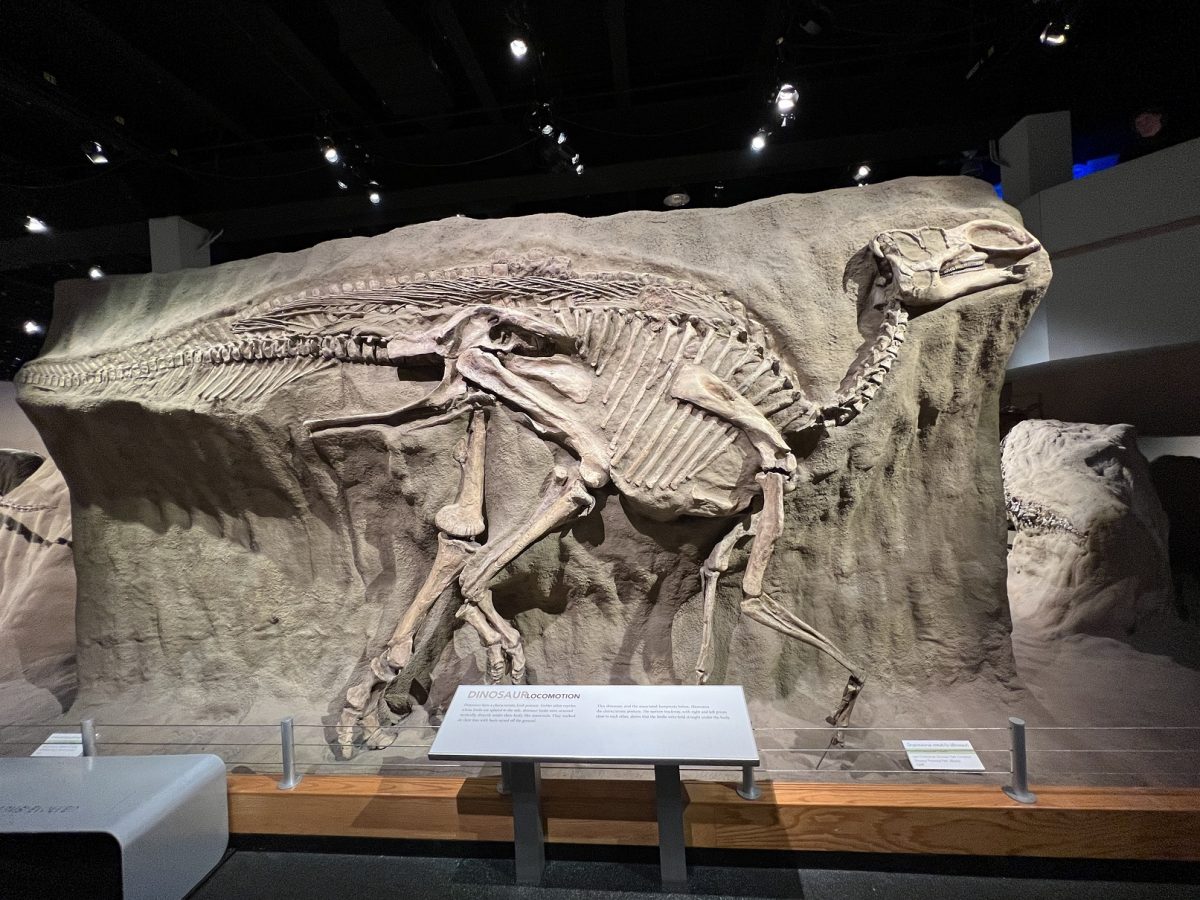
Ceratopsians were the horned herbivores of the Cretaceous. This one is the Chasmosaurus belli, discovered in 1914 in Dinosaur Provincial Park, Alberta.
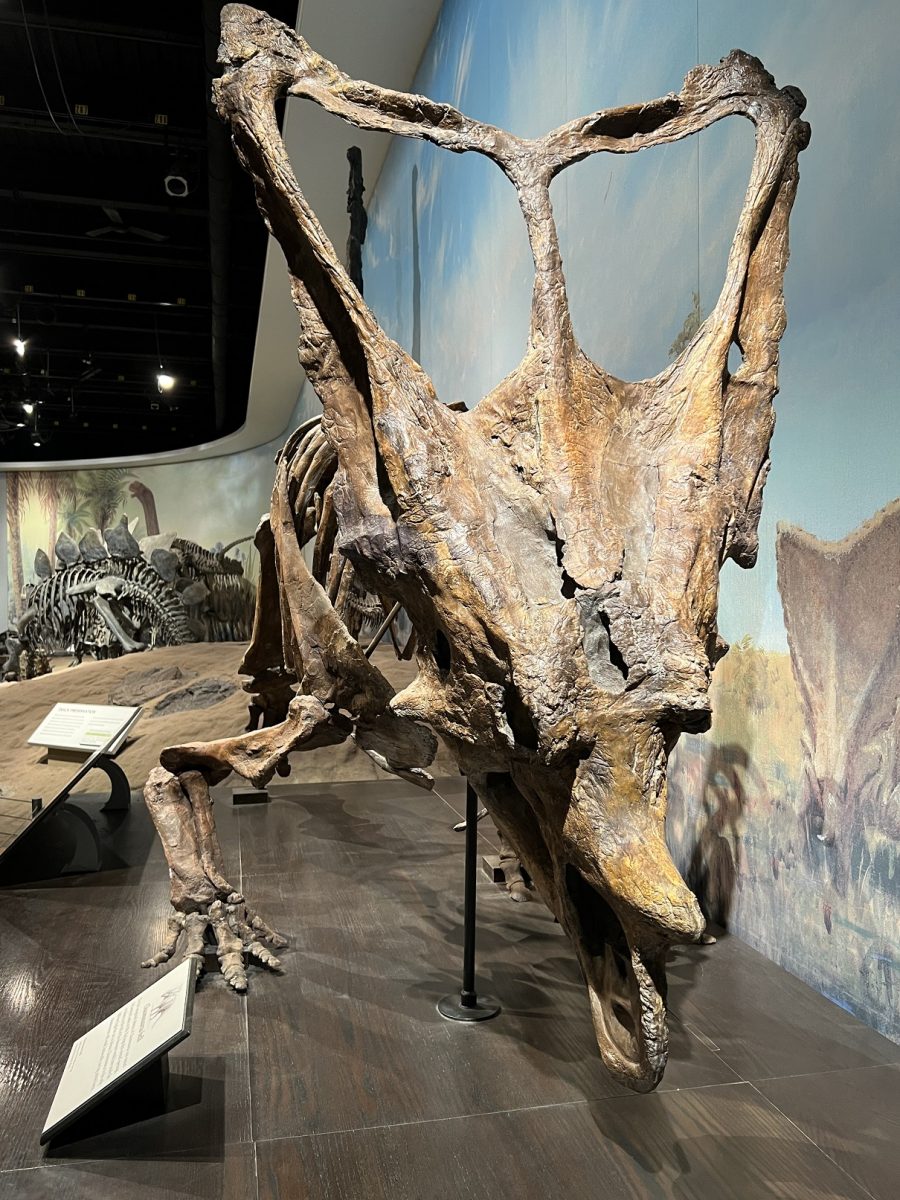
The trail now opens up into a very large room with the dynamic lighting of Tyrannosarus Rex. Sharp teeth, eyes facing forward and keen sense of smell made it the most formidable carnivore.
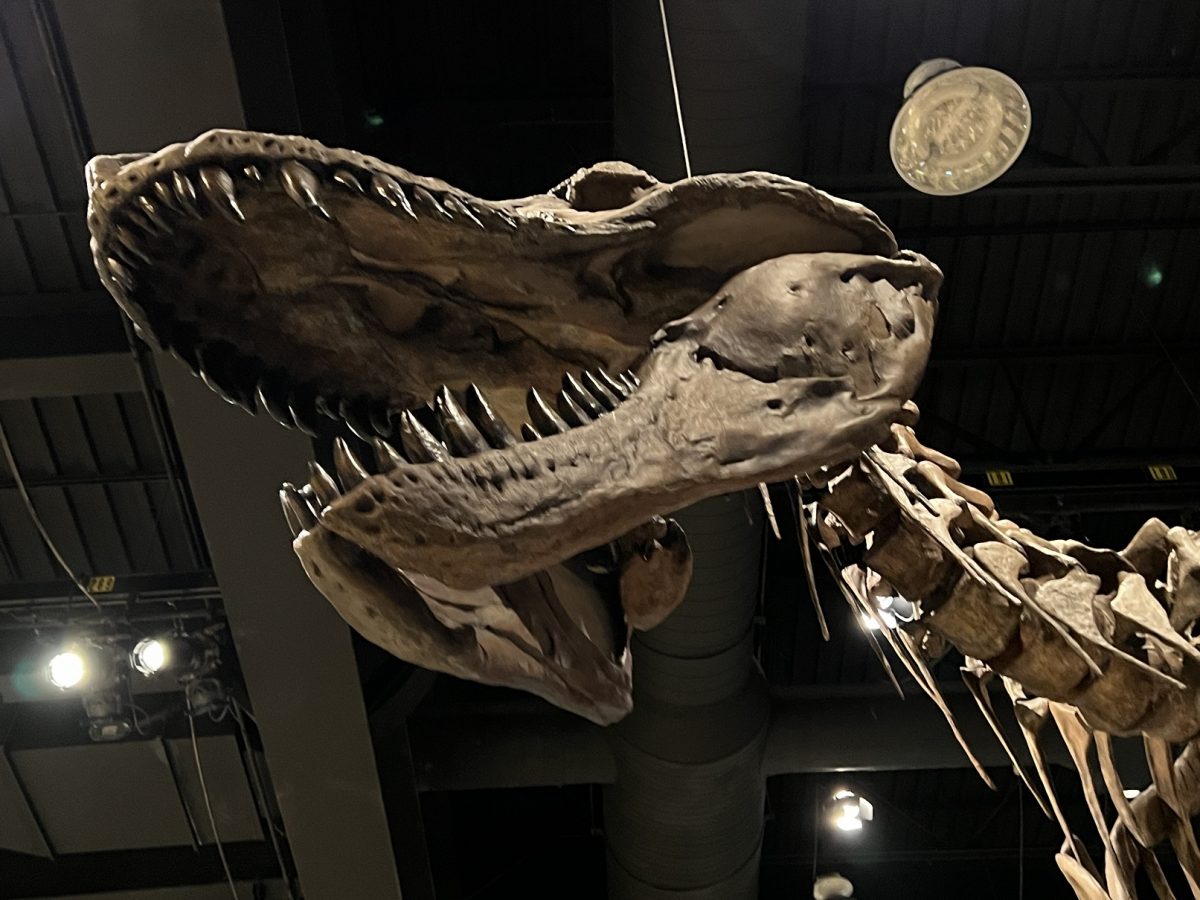
This is only one of two specimens discovered in Alberta. Only the hips, legs and feet were found. The rest was based on a T Rex found in Montana.
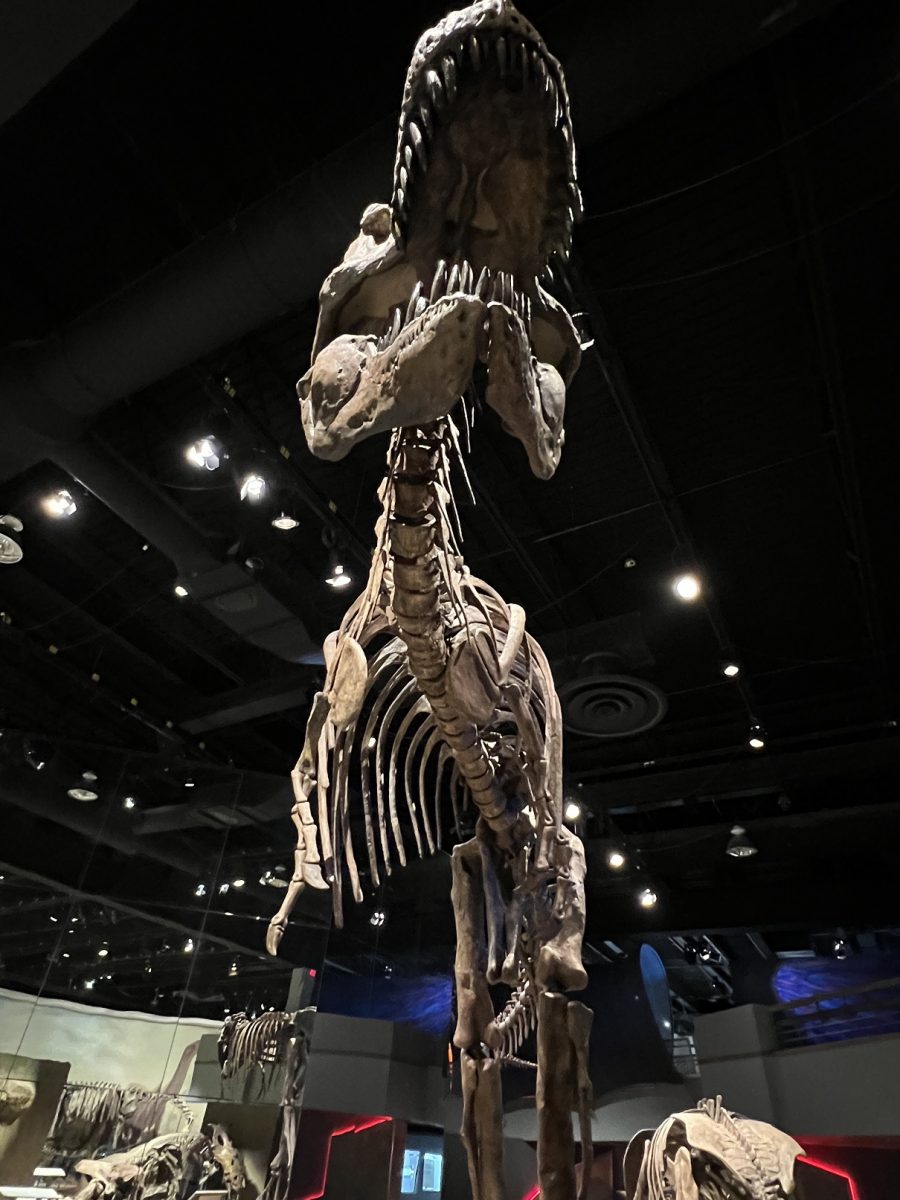
The final gallery looks at the most recent fossils. The Mammoth is from the Pleistocene period. Alberta was a shrubby woodland that was replaced with grasslands with the colder climate. Some of the bones of this specimen show evidence of butchery. And tools were found nearby.
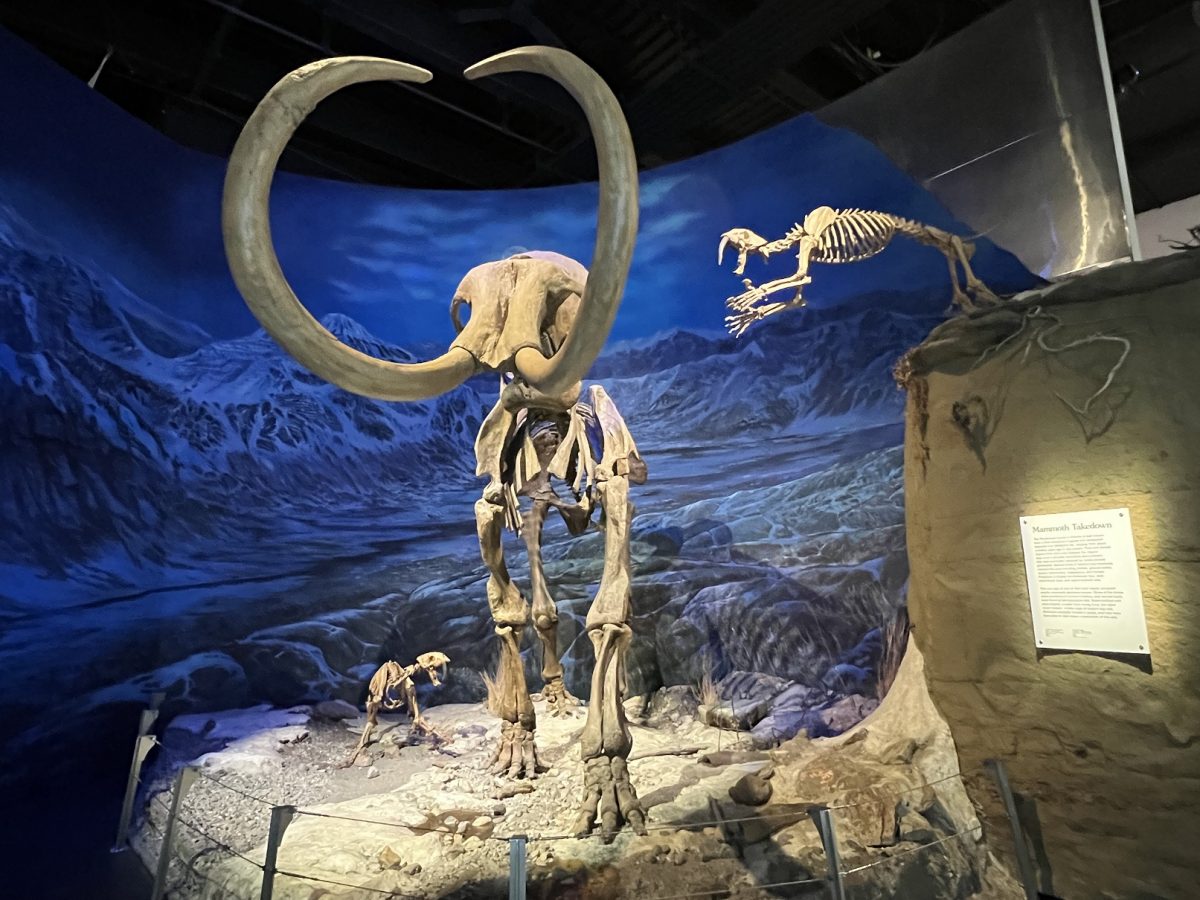
As I was making my way out, still amazed at what I had seen, I encountered this wall art by the exit. It runs the whole length of the wall at is just as impressive as the fossils.
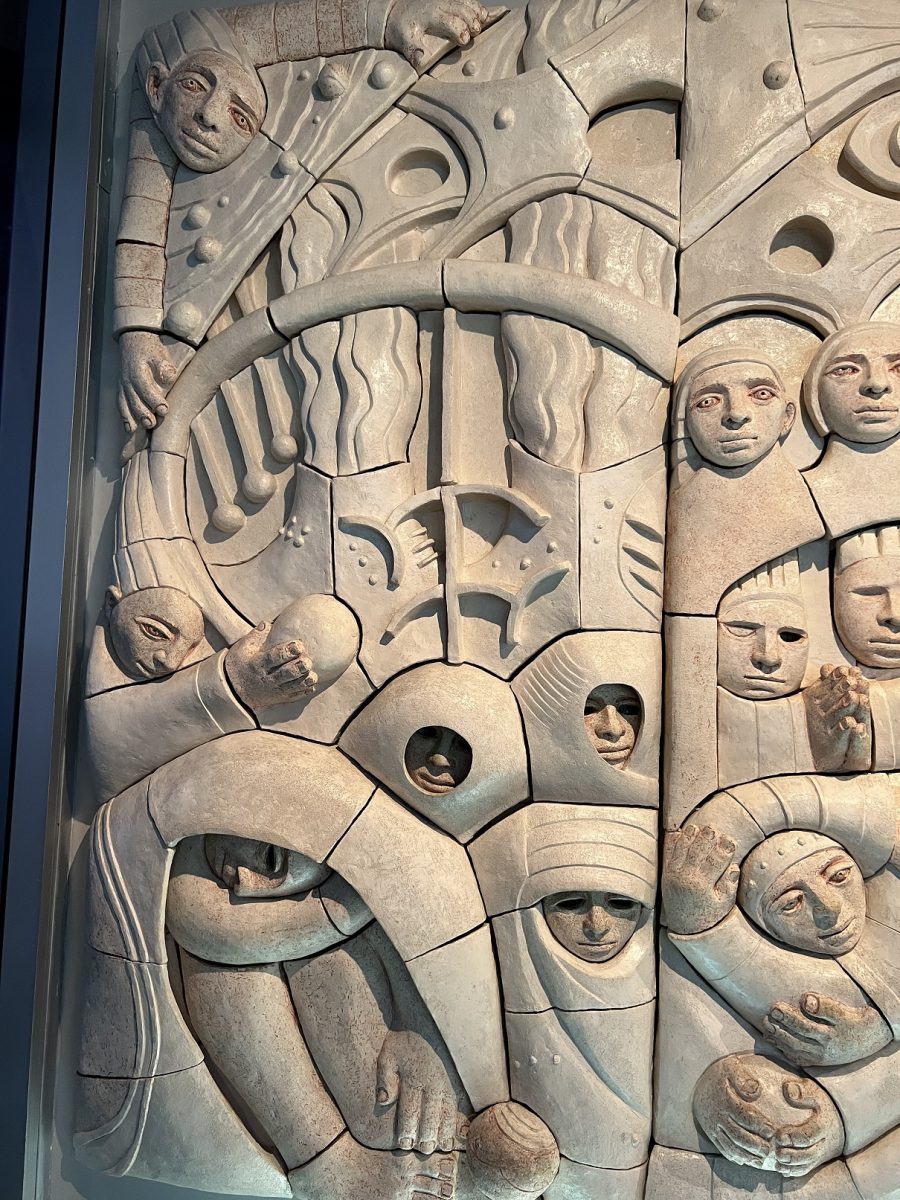
I could not find an artist’s card so I wrote to the Tyrrell and asked. This was their response.
“The Story of Life” by Lorraine Malach, a Canadian artist
The installation at the Royal Tyrrell Museum represents the artist’s interpretation of millions of years of evolution; human forms and symbolic elements combine to show the progression of life throughout geologic time.
The Story of Life was initiated at the Museum in 2000 and completed in the fall of 2003 as a tribute to Lorraine Malach after her death. Sadly, she passed away before completion of this linear panorama, which was finished by her friends and colleagues.
The mural depicts life forms, using symbols, human forms and expressions, from the Precambrian (4.6 billion years ago), to the Cretaceous Period, (145 – 66 million years ago). The mural consists of ten, four by eight feet panels, and used 10 tons of clay.
The artist didn’t give much information as she wanted every individual to get their own interpretation of her work.
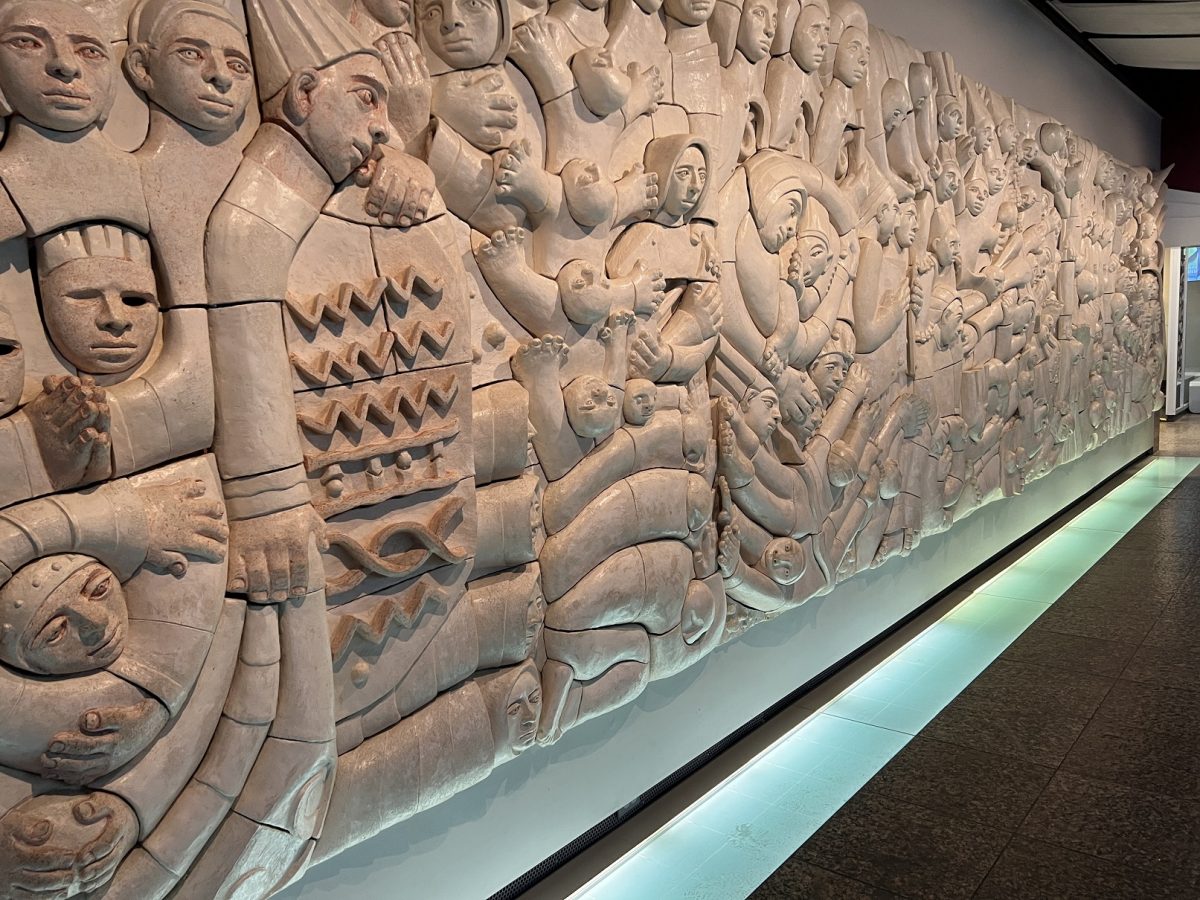
And that was the end of the tour. I remained suitably awed for the rest of the day.
